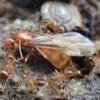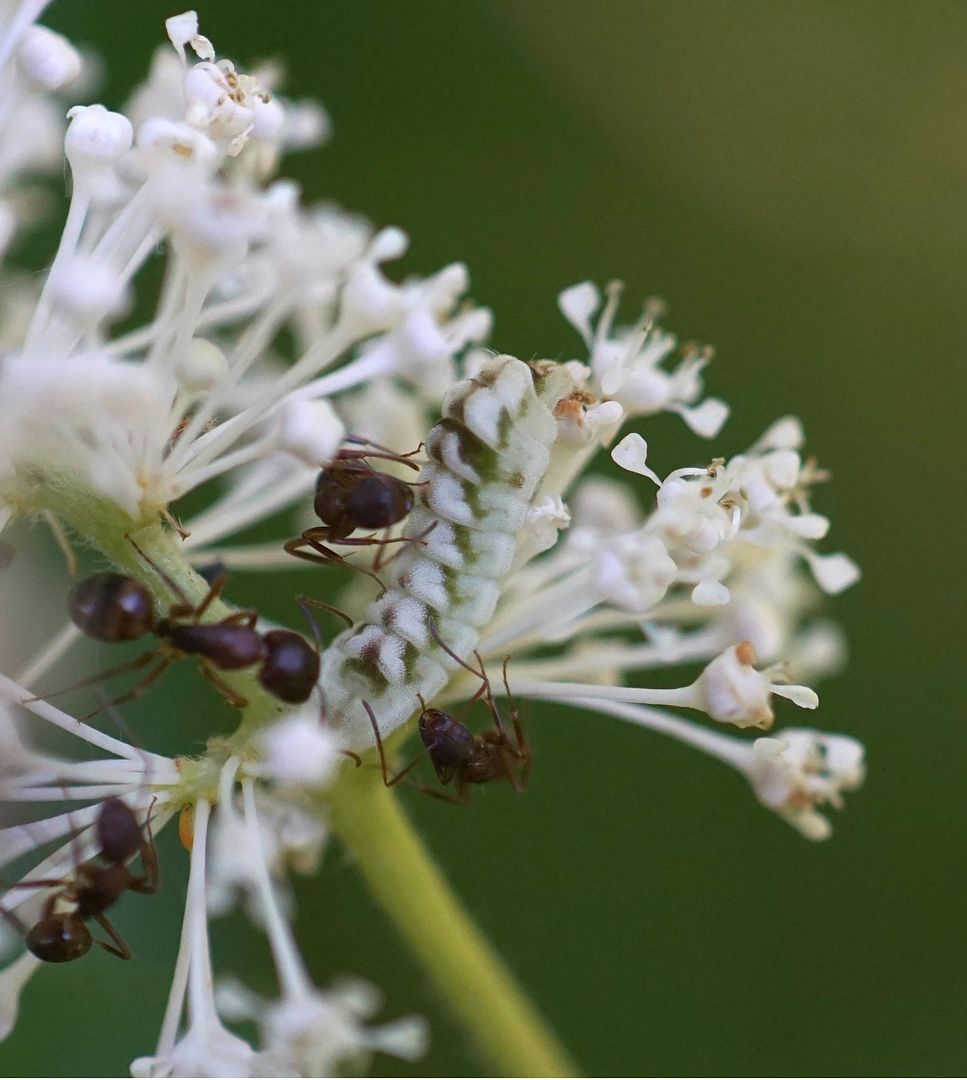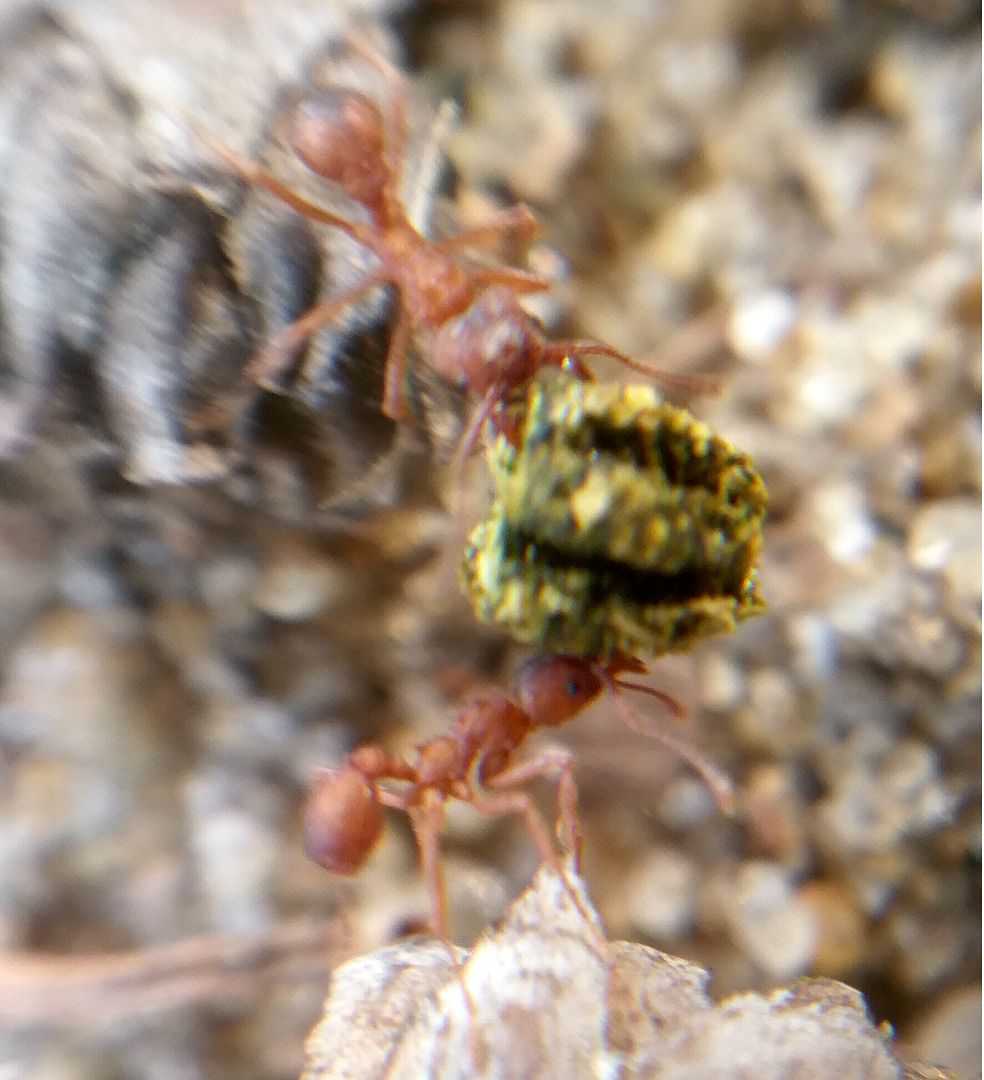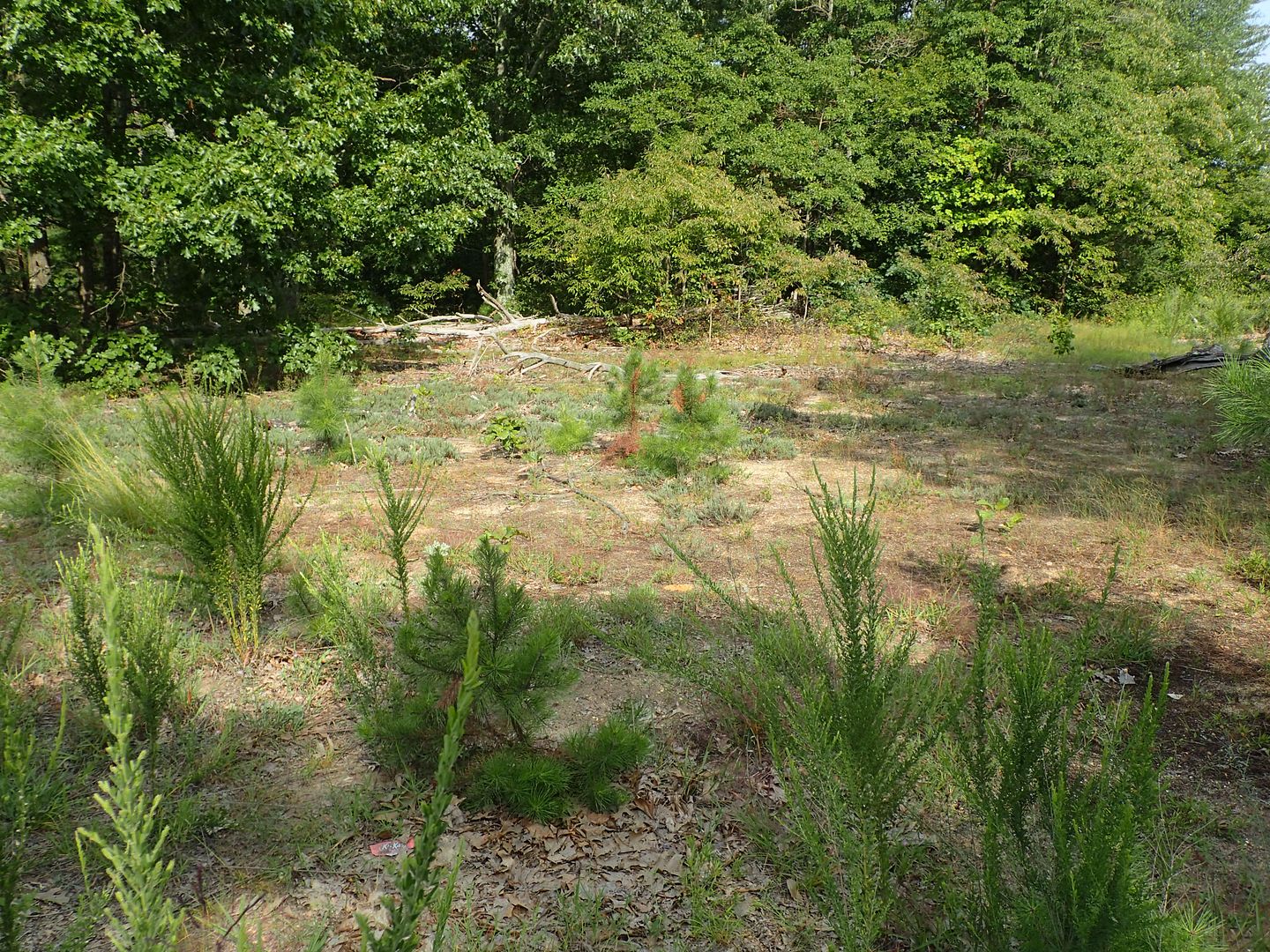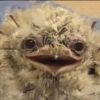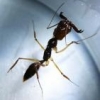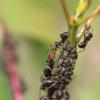The information in this thread is geared towards an eastern North American audience, but it's fundamental message can be applied to other parts of the world.
Doug Tallamy is perhaps the best speaker on the topic of conservation of native plants and why we should include these in our landscapes. Sadly he's also a bird watcher talking to an audience of mostly bird watchers, though this isn't entirely a bad thing. Ant and Bug people don't typically plant or design landscapes, unless they're raising butterflies. Whereas bird watchers tend to be home owners who landscape with attracting birds in mind. Prof. Tallamy is currently the head of Entomology at the University of Delaware and yet he's not much of an ant guy. I know because I've asked him in person. In his book "Bringing Nature Home" he talks at length about all different sorts of insects that rely on plants in our landscape, but ants are only mentioned once and it's in passing in a larger section on aphids. Clearly there's a need to fill in the gap here.
His book is summarized well in the video below. There is also a link to his website below that which is a list of what plant genera support the number of species of Lepidoptera (moths and butterflies). Which can be quite pretty and sometimes evil-looking.
http://www.bringingn...t-to-plant.html
He focuses on moths and butterflies because they're the number one source of food birds eat. He speaks and writes about other insects as well, but almost completely ignores ants, the most abundant kind of insect on earth by number. 1 in 3 insects on the plant is an ant. Species wise though ants are not as diverse as they should be. This is likely because most of them are generalist omnivorous. Meaning ants are in direct competition with birds for insect foods and seeds, and probably wouldn't sell as many books if his readers knew they were also planting an ant garden. Though really they're planting spider gardens, assassin bug garden, and aphid gardens as well as the path to biodiversity is the same for all of these.
Ant species rarely specialize in nesting in or around any one particular kind of plant. That is, you can't plant a specific kind of tree, forb (wildflower), or grass and expect to get a specific species of ant because of it. Some species certainly cater to some ants with hollow thorns and structures geared towards getting ants to nest inside of them but this doesn't guarantee any one particular species of ant. They tend to be generalists in their environment. Things such as soil type, presence of dead wood, and climate determine what species of ants occur in a given location.
A fundamental rule of nature is if you remove 1% of a habitat, then over the next 25 to 50 years you will have lost 1% of the species. This is because you have lowered the carrying capacity. Now 1% is hardly noticeable, but when you bulldoze 70% of a forest, over the next half century you can expect to lose 70% of the species that depended on that forest in what remained. But the good news is this works both ways.
By planting trees, shrubs, forbs (wildflowers) and grasses you are literally increasing the three dimensional space ants have to forage on and nest in. If these are native plants then they are more than likely producing 40 times more insects of nonnative plants. Consult your kitchen spice rack for a collection of defensive chemicals plants have come up with to stop from being eaten. But along with each plant adaptation to not get eaten comes a whole host of insects that evolved to specialize on eating that kind of plant and digest that kind of chemical.
Here Doug is interviewed, showing off his Black Cherry trees, Prunus serotina. I have planted the same species in my yard, but my tree (sadly) doesn't have the same problem his does. I actually did plant this as a host for Tiger Swallowtail and Red Spotted Purple butterflies. My tree doesn't look anything like his because I have 4 species of Camponotus, 2 Formica, 1 Lasius, and a Temnothorax constantly foraging on it. Every leaf of my tree his iconic caterpillar nibbling and I've even seen both butterflies lay eggs on it, but they never make it past the second instar before a Camponotus pennsylvanicus carries them off kicking and screaming. Often the eggs are out right removed from the plant before hatching.
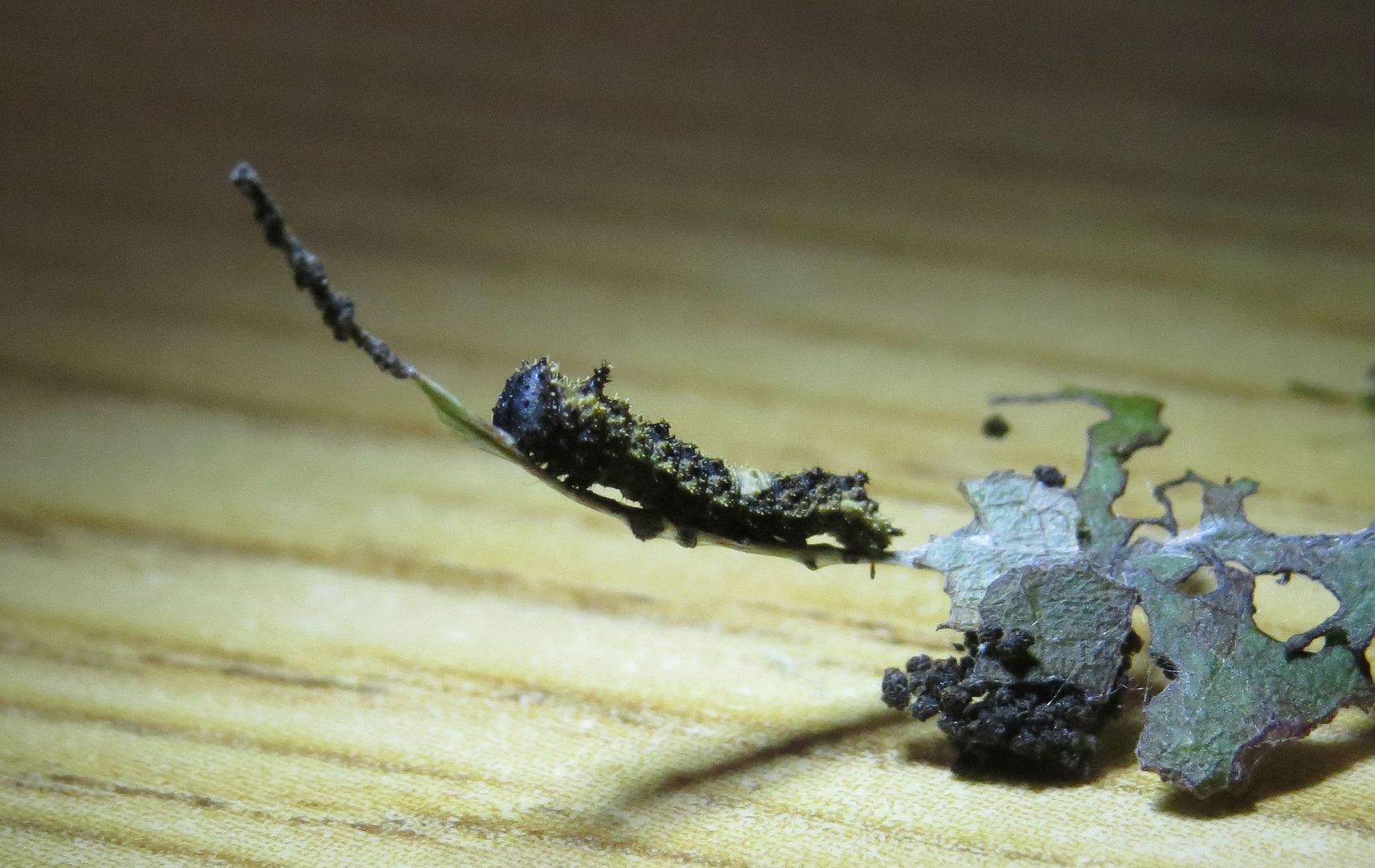
Red Spotted Purple Caterpillars actually have a defense against ants which is better shown in the video above than my picture here. The caterpillars build a little stick out of their frass and silk which they run onto whenever the ants come near. The ants don't want to walk on caterpillar frass so the caterpillar gets to live another day.
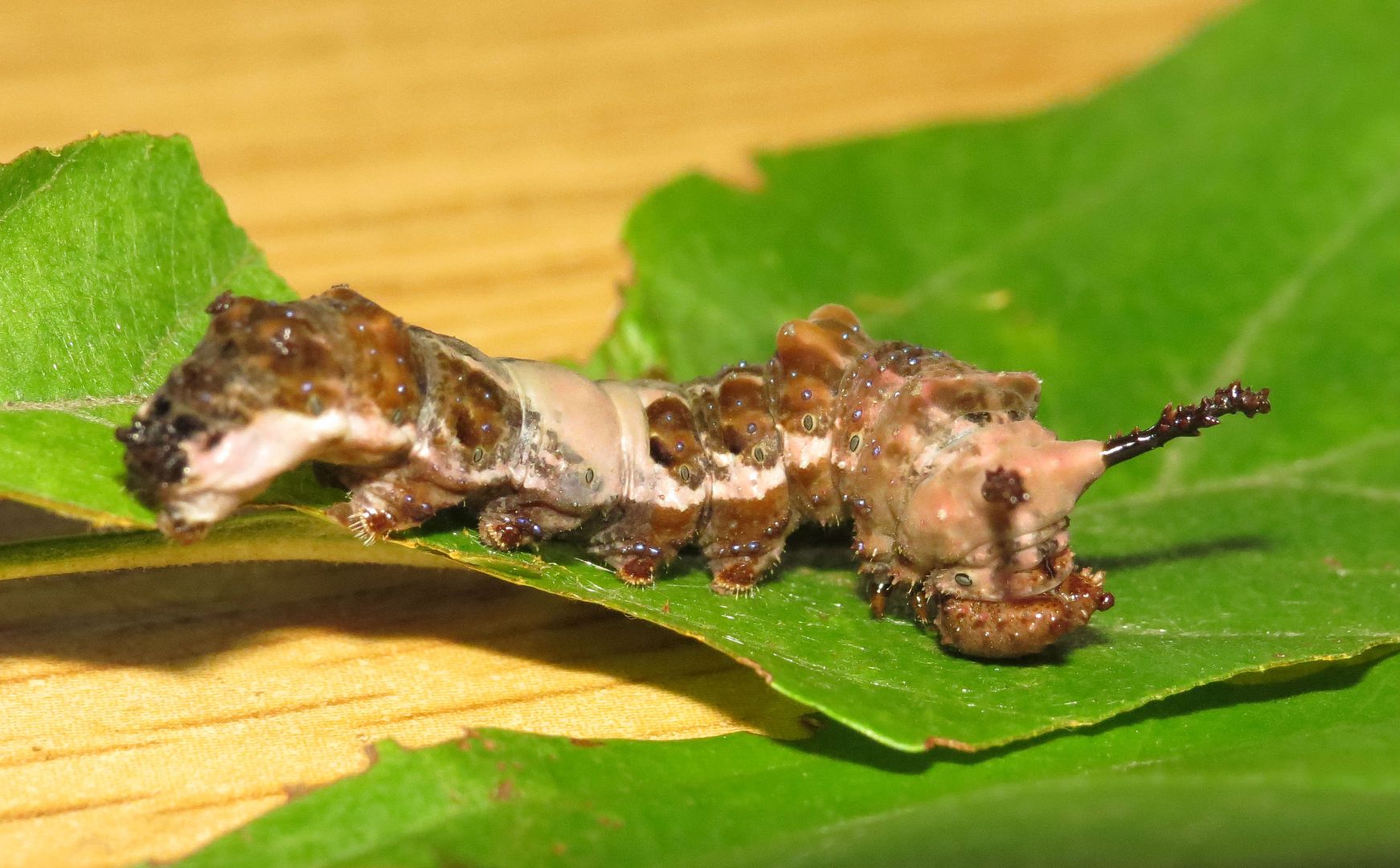
Eventually Red Spotted Caterpillars become too big for Camponotus pennsylvanicus to carry away, so they abandon the pooh stick strategy and begin mimicking bird droppings, (or a diseased twig of some kind,) because birds don't like eating food that looks like it's not food.
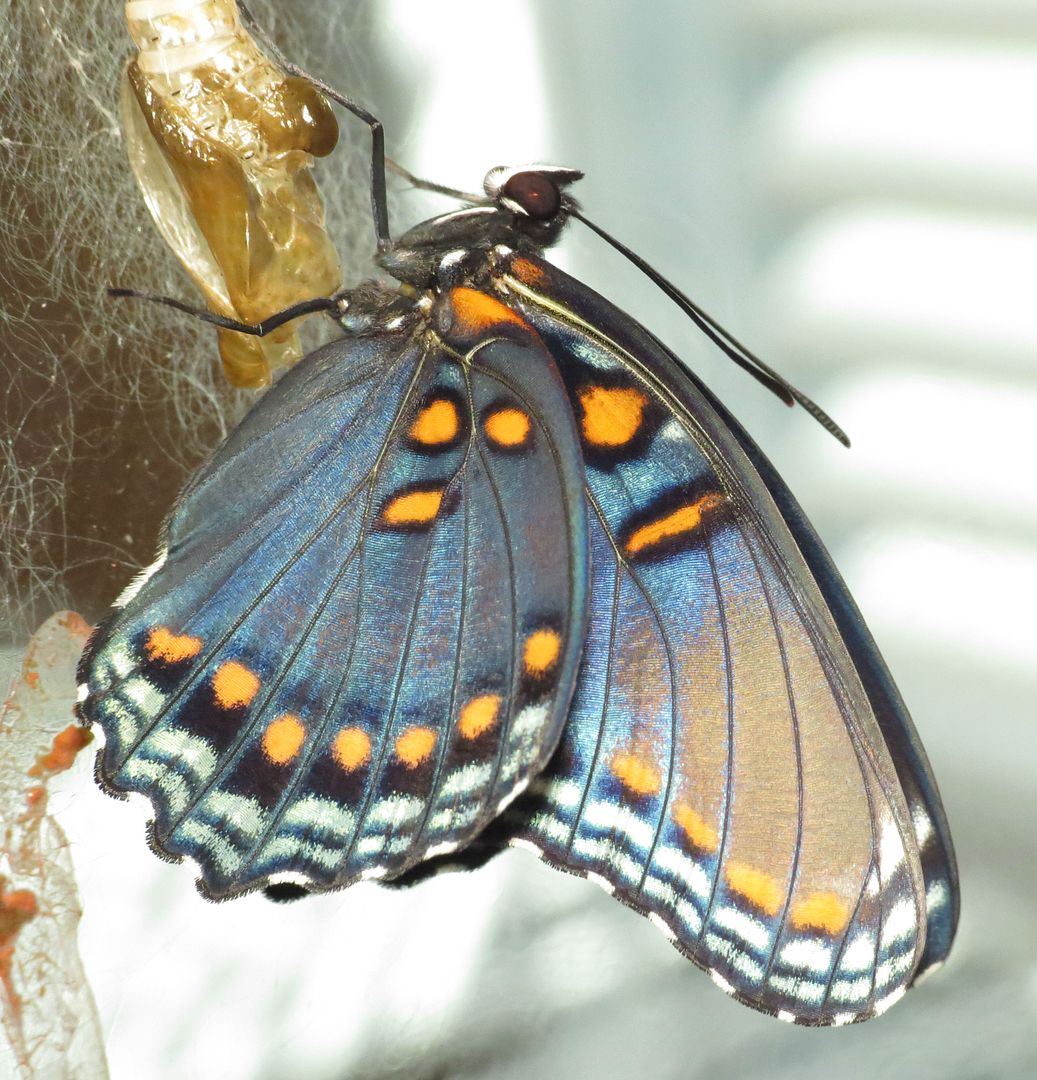
The adult is later born to fly around and do its thing...
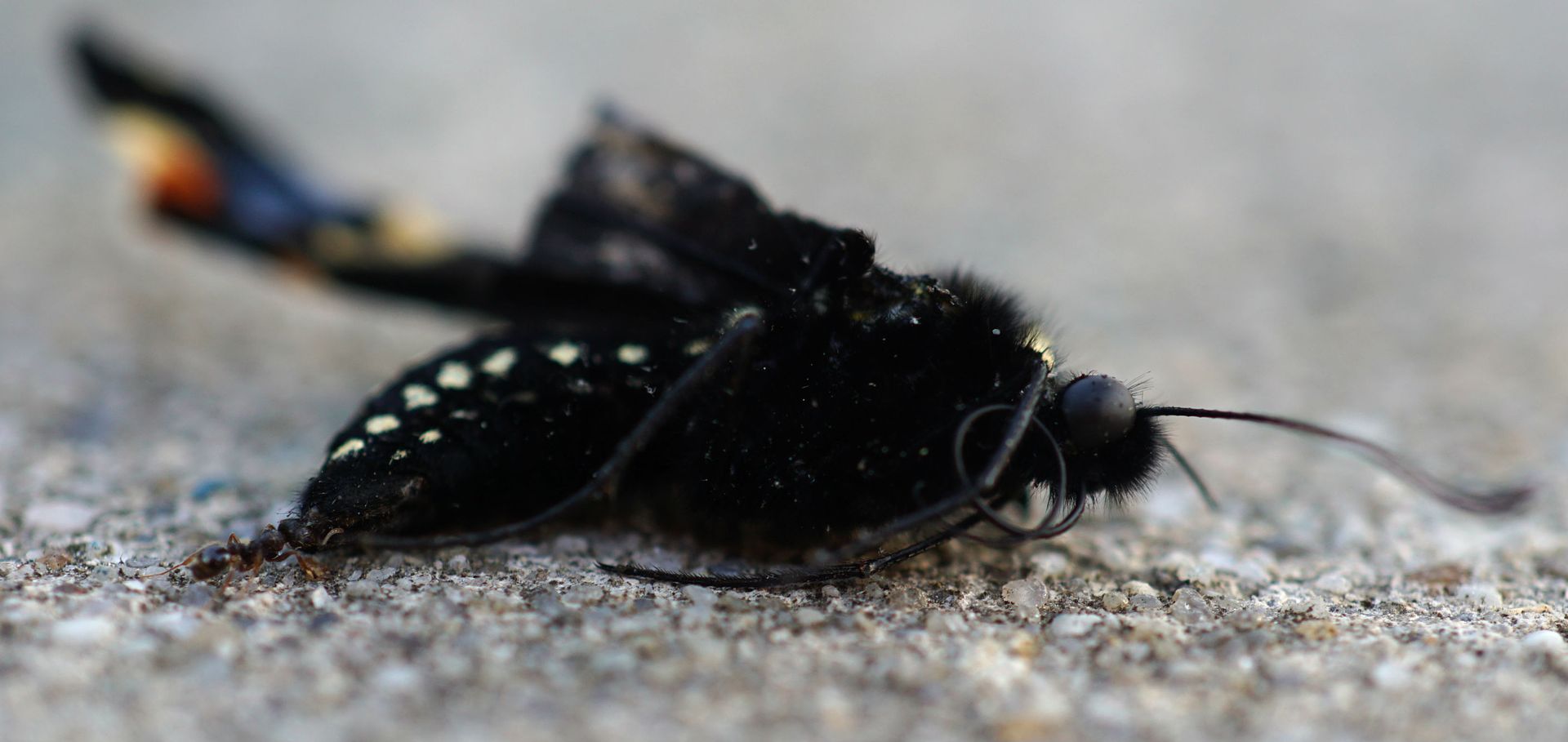
... until it drops dead. Actually this is a Black Swallowtail but you get the idea. All insects eventually die of old age and fall to the ground. And that's where ants come in to clean up the mess.
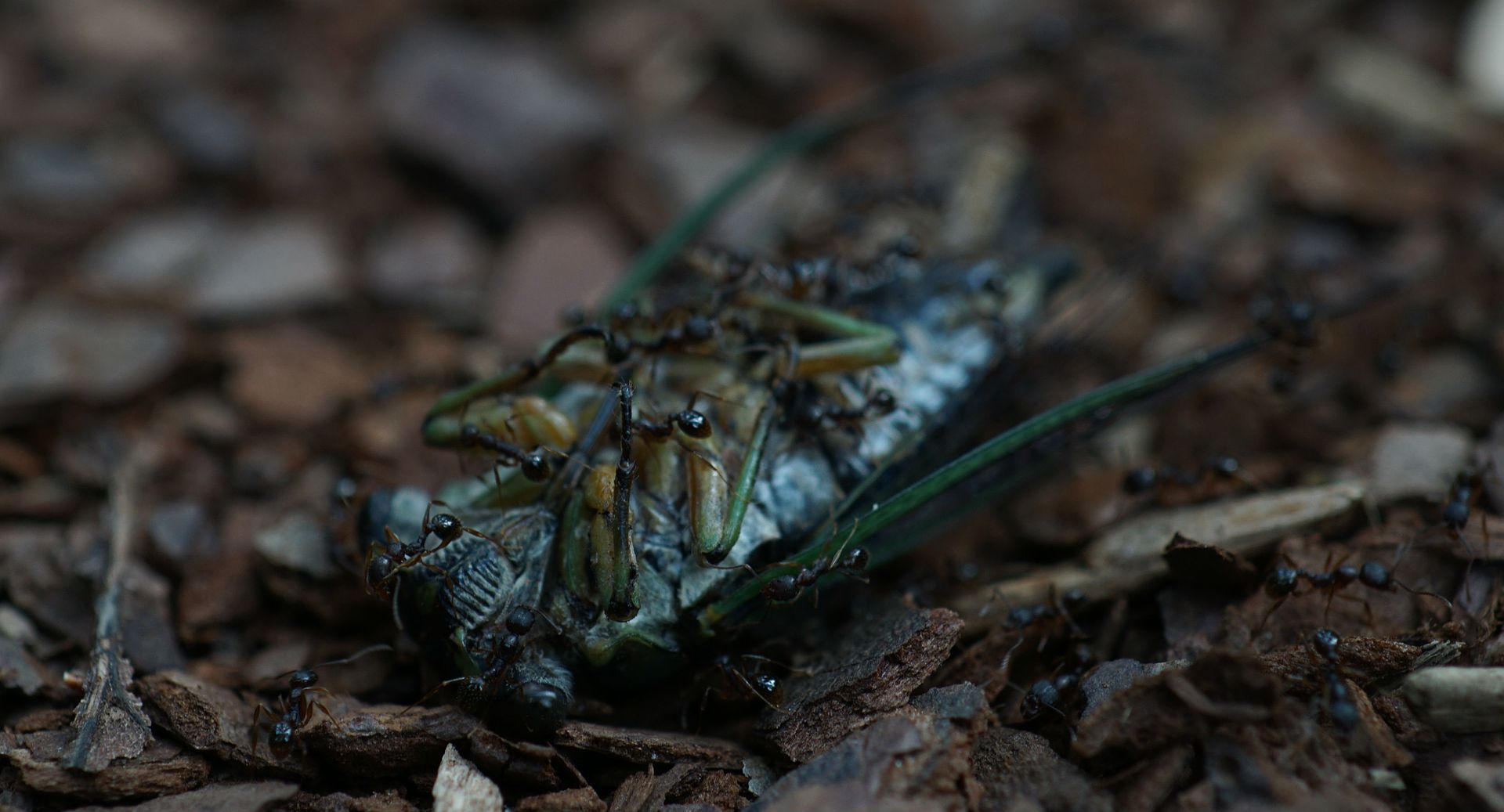
Cicadas lay eggs in the underside of branches to a number of our indigenous hardwood trees. The nymphs feed for a short time then drop to the forest floor where they burrow in and begin feeding on tree roots. Depending on the species 3 to 19 years later they emerge as an adult. Some are killed by ants before they molt out of their exoskeletons. The ones that go on to become adults though, complete their life cycle over the summer and eventually drop dead where ants quickly find them.

The same thing happens with other insects too such as bees though this one's not quite dead yet.
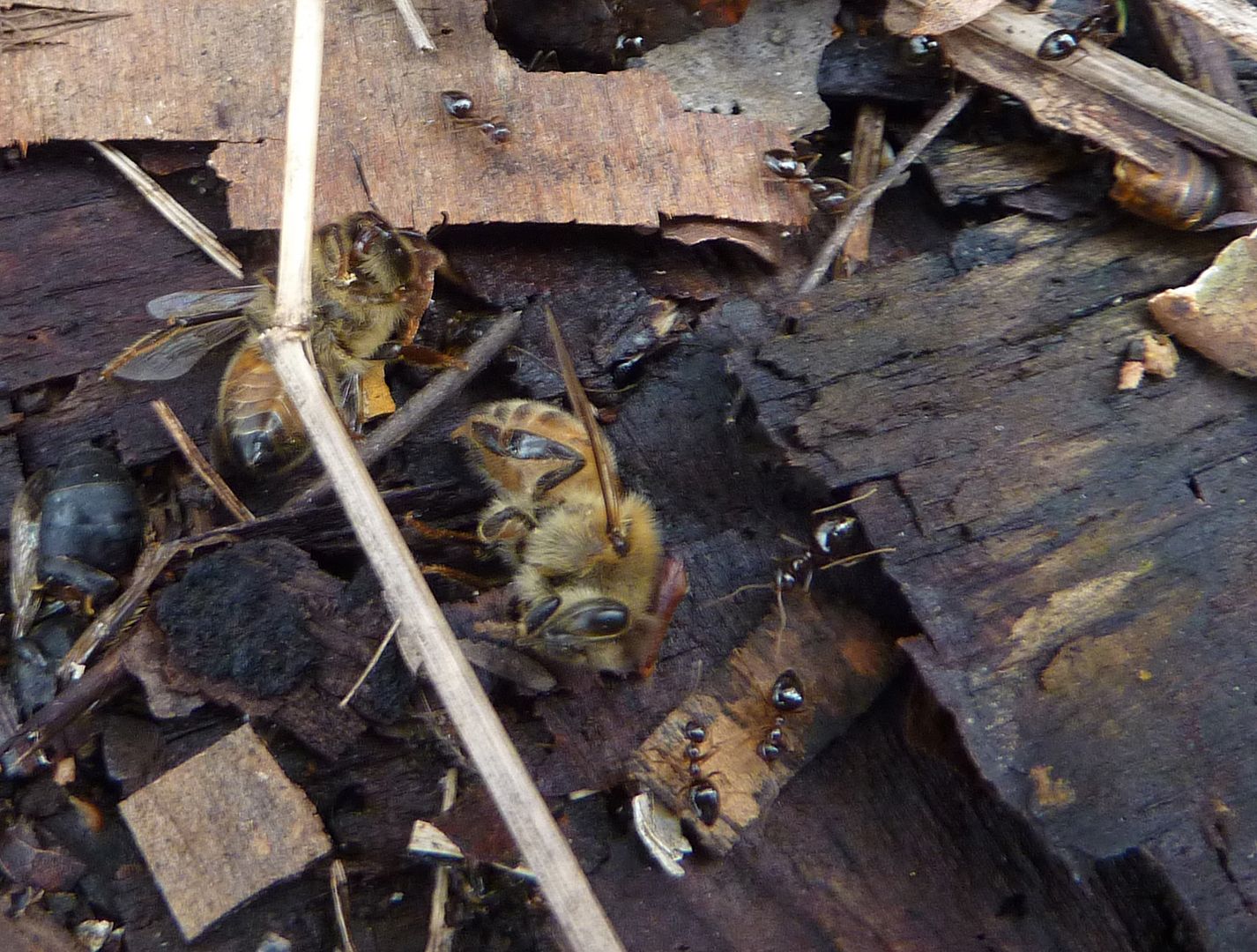
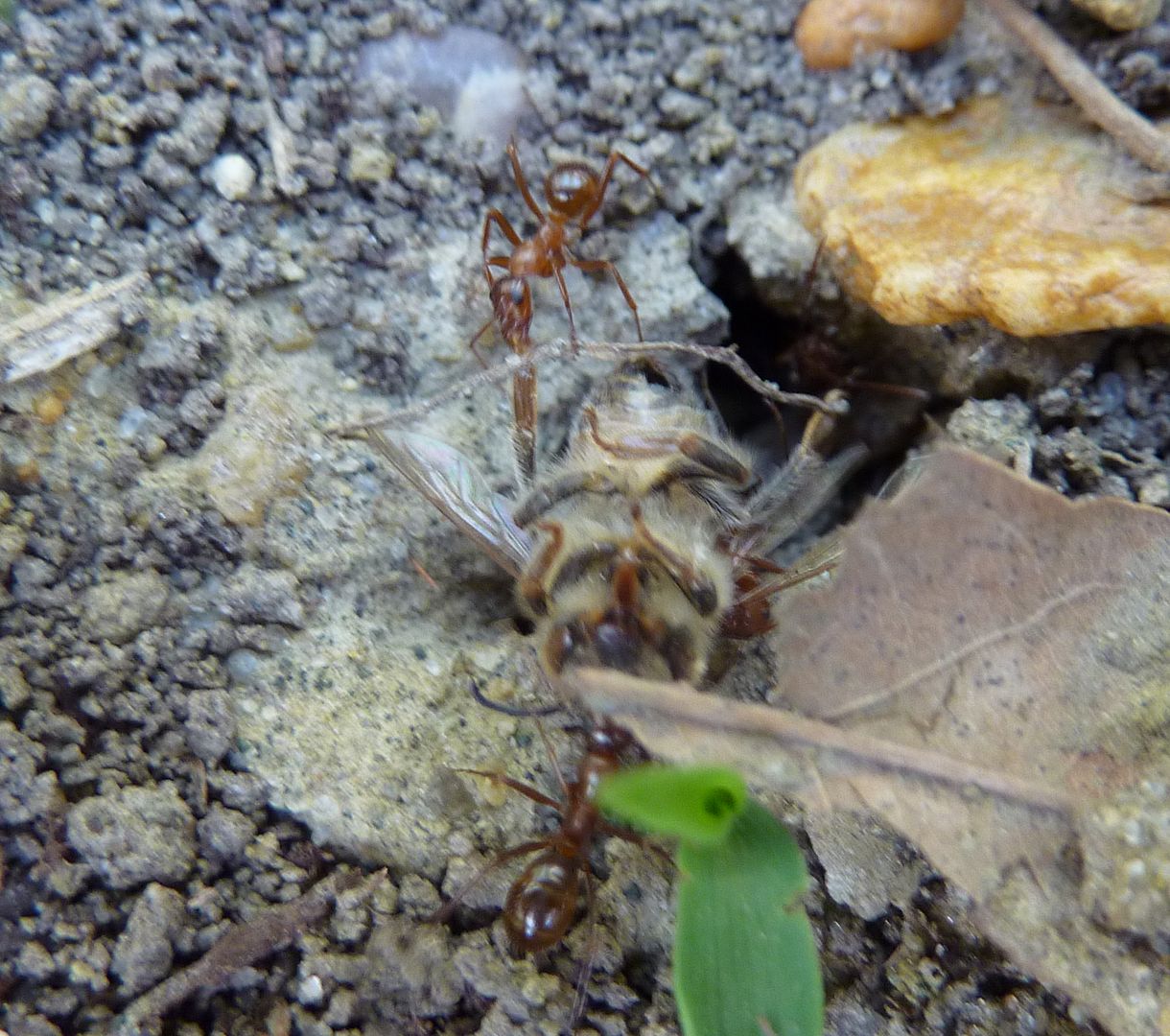
Each spring Honeybee hives clear out their dead. Small piles of dead bees quickly become swarmed by ants.
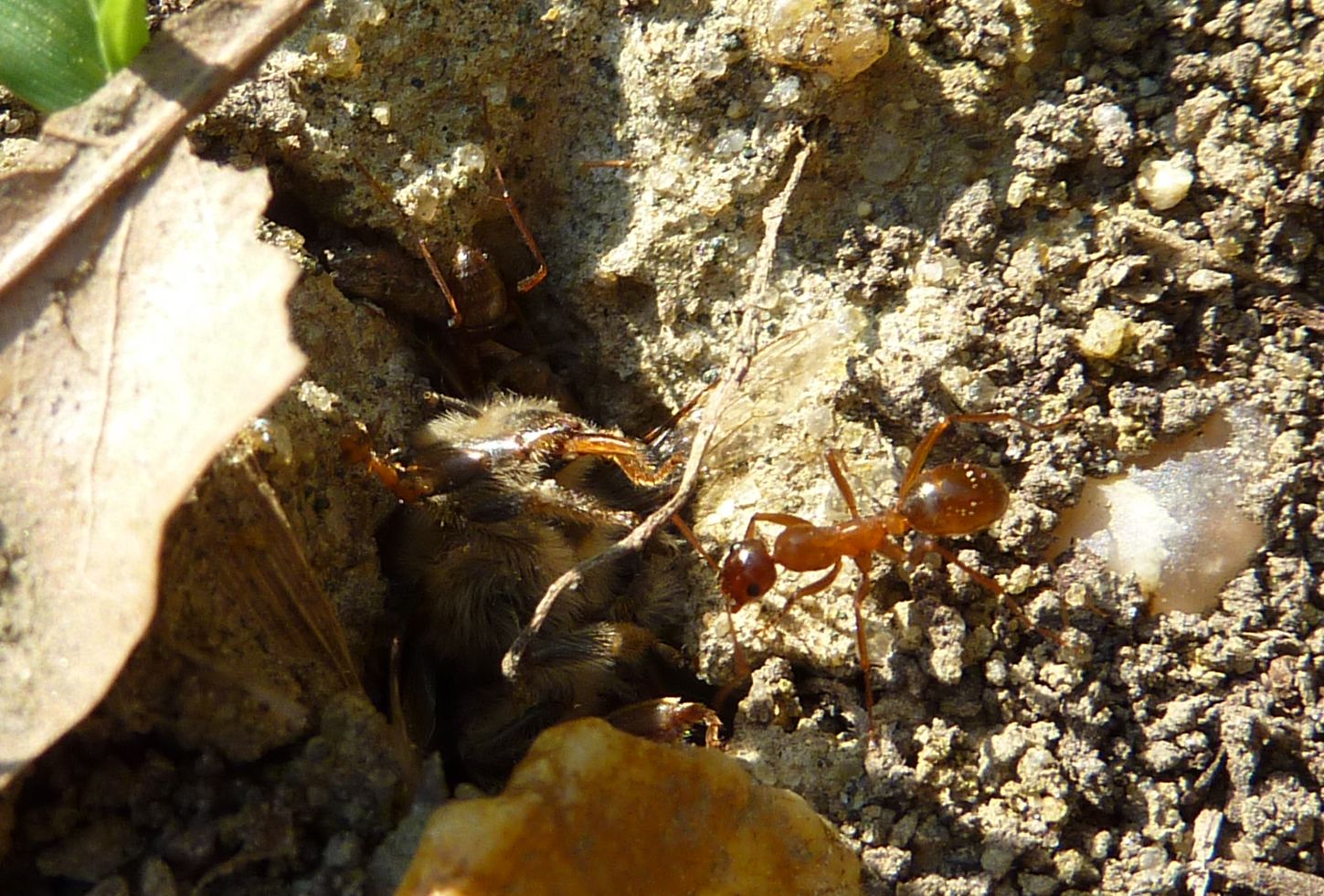
Which they take back into the nest when they can.
Within rotting wood, particularly when in damp and shaded locations, they are host to a variety of soft bodied arthropods that decompose the log. This is the prime nesting area to a lot of our more cryptic hunting species.
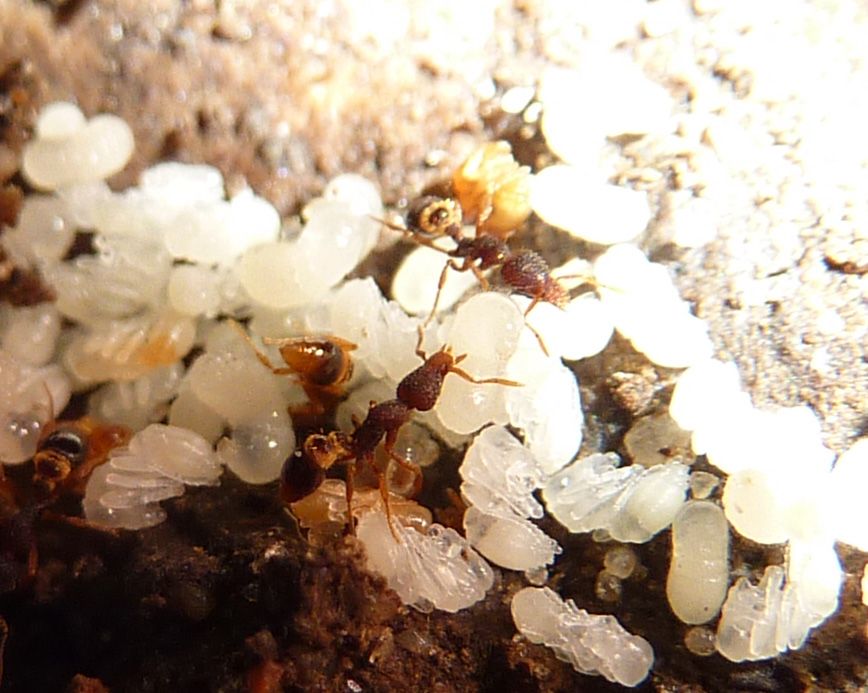
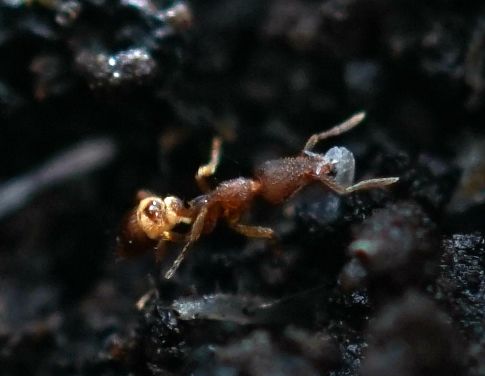
Strumigenys pergandi successfully catching a soft bodied arthropod.
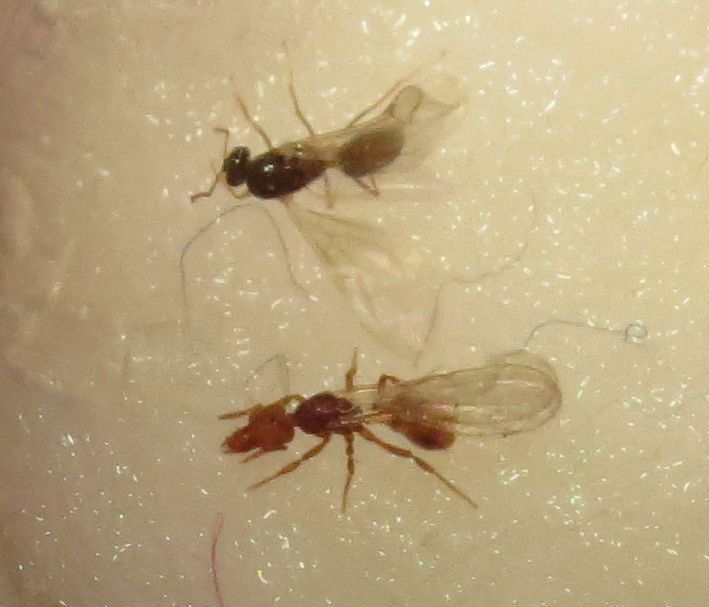
They fly on days late in the summer with heavy cloud coverage. I know because I happened to have been at a car dealership when I found them landing on all the cars.
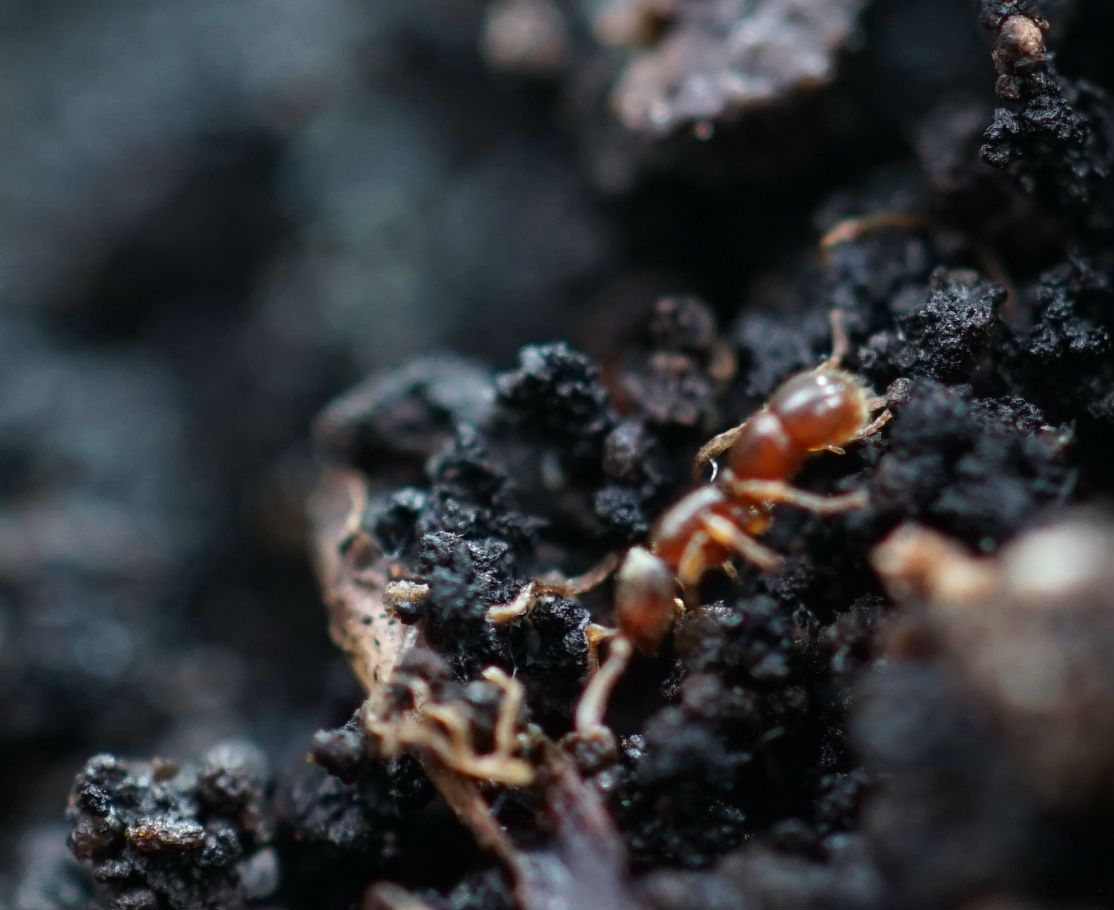
Proceratium sp.

Proceratium are odd-looking because they have a forward facing gaster, which makes it easier to sting food items in tight, closed spaces of rotting wood and leaf litter where they nest and hunt.
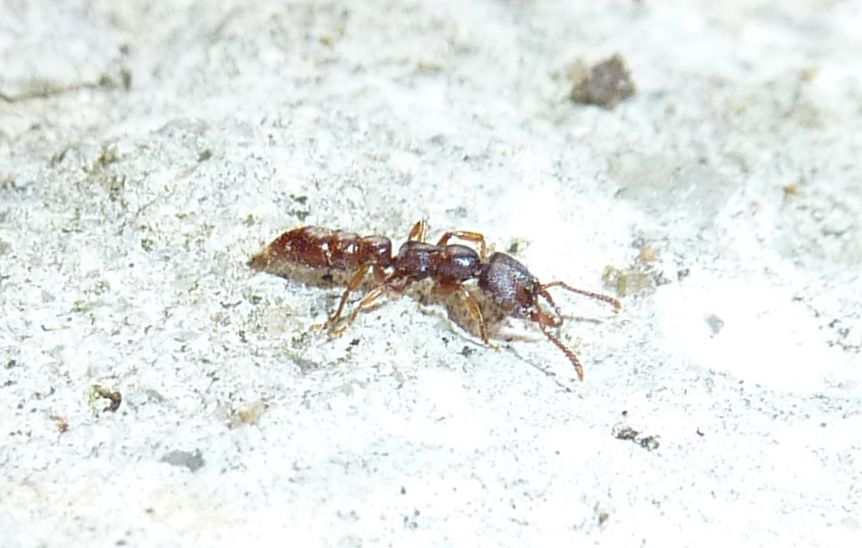
Stigmatomma, or Dracula Ants, are yet more cryptic. They only occur in forests where decades worth of leaf litter has been turning into pristine top soil. These are specialized hunters of centipedes which means they need an ample supply of decomposing arthropods to keep their prey items in good stock. (You basically have to sift threw leaf litter for an hour to find these!)
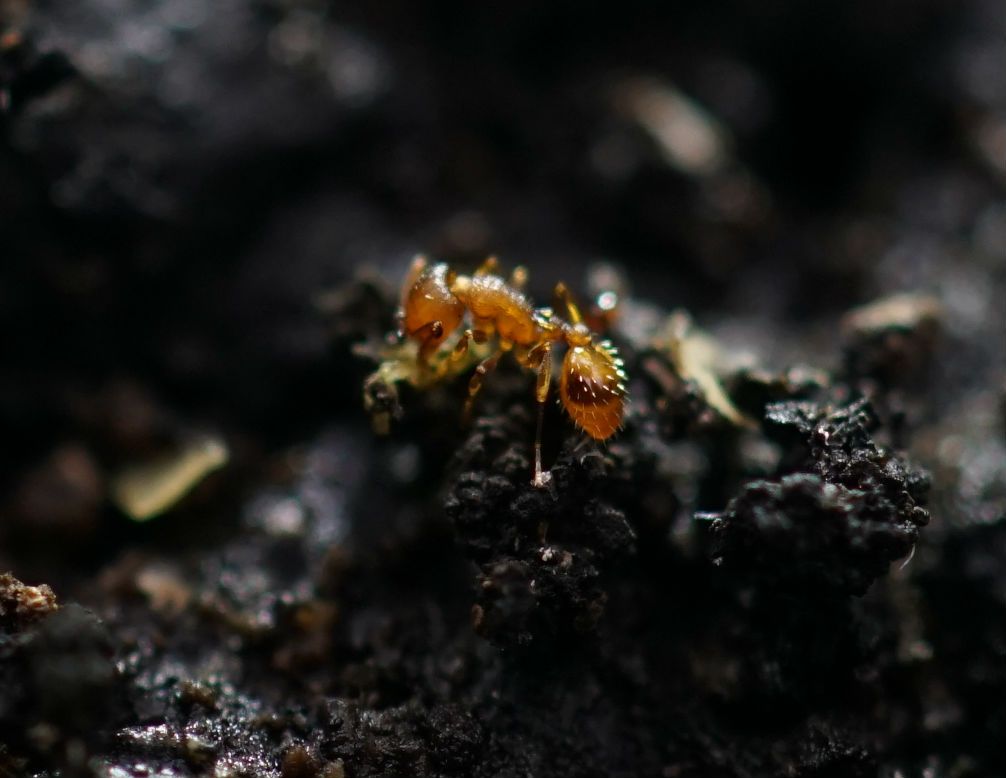
Temnothorax also nest in rotting wood and within dead plant matter but are better about foraging on the surface of these structures and on living plants where they're more easily noticed.
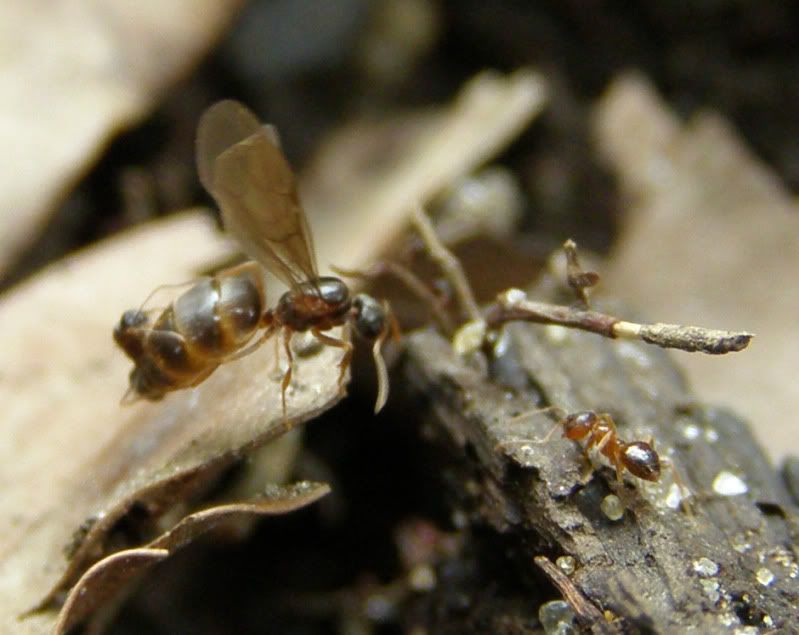
Moving back into the leaf litter a moment, opportunistic nesting species such as Nylanderia flavipes come to nest. This is not a native ant species but in the same habitat our native Tapinoma sessile is common.
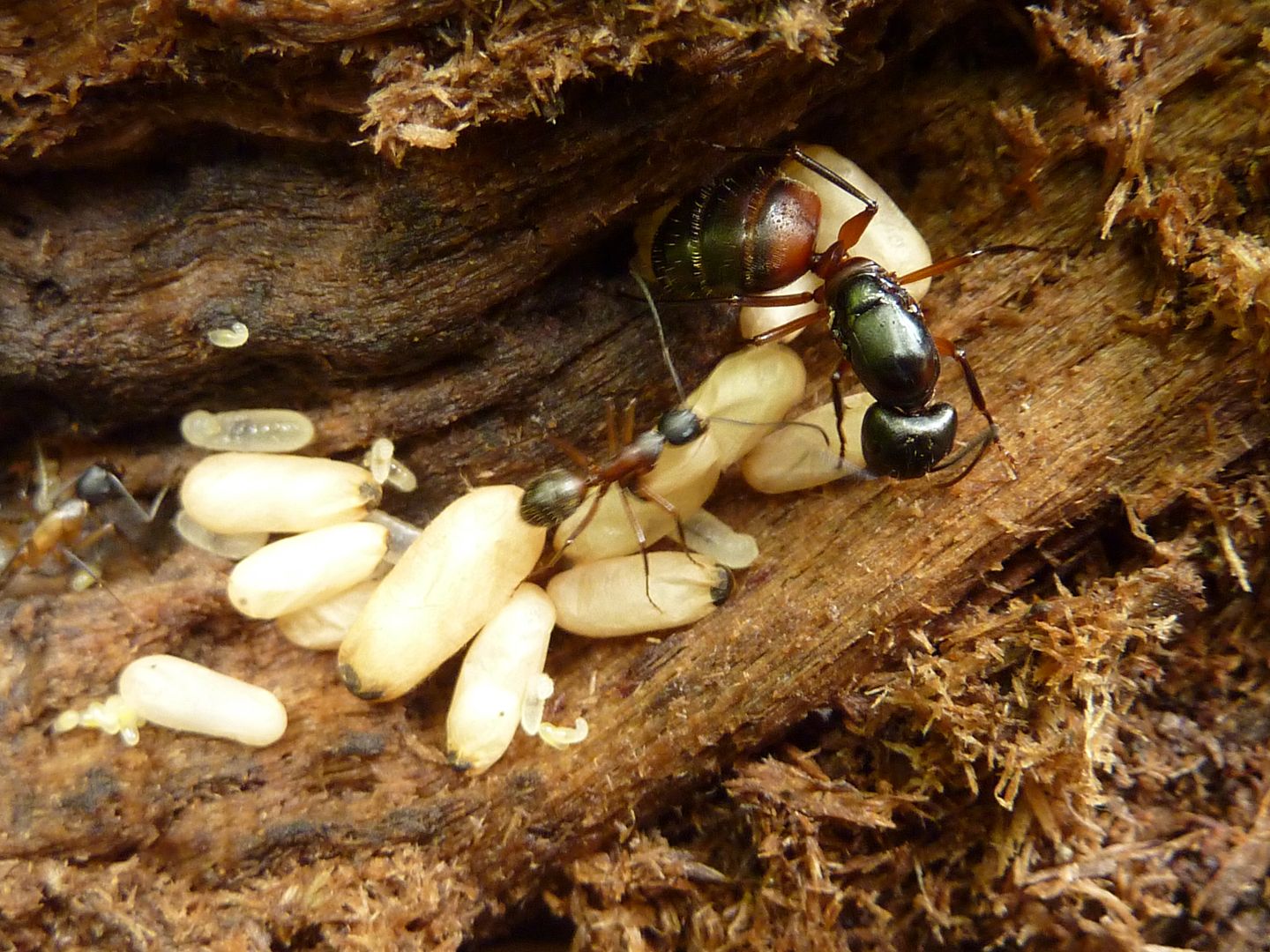
Dead wood is also where a lot of our wood nesting Camponotus species found their nests. Sadly once the bark is ripped off the log, they no longer become ideal for nesting in.
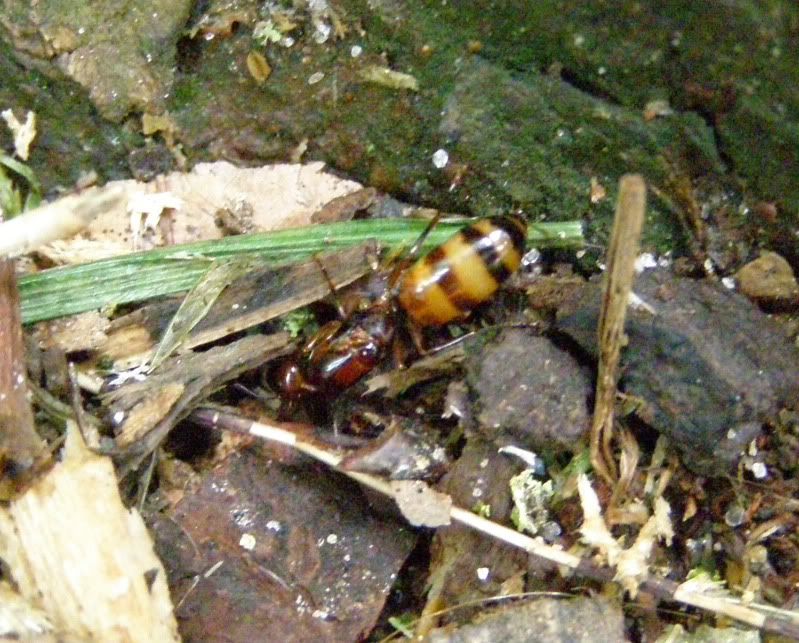
Other kinds of Camponotus have become more common in my yard thanks to planting more wildflowers and plants that get aphids on them. Here a C. subbarbatus queen roams around looking to start a nest. This species also takes advantage of hollow plant stems to a number of forbs to nest inside of. I have never found this species foraging on the ground, they seem to do so exclusively on plants so a good collection of wildflowers might be essential for them.
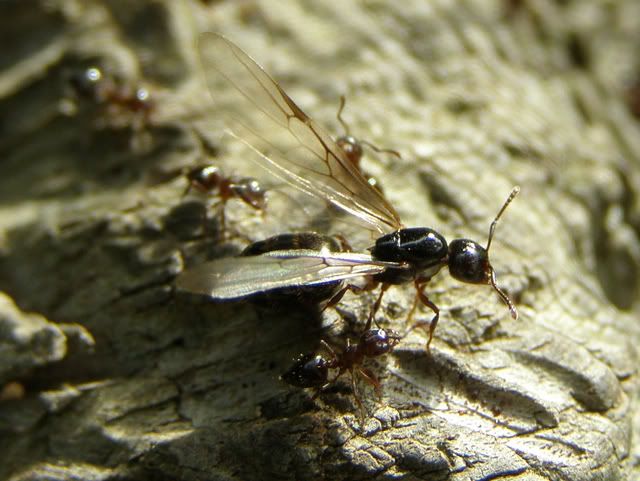
In the absence of Camponotus, Crematogaster tend to take over dead wood structures up north. Farther south, many of these species are ground nesting though.
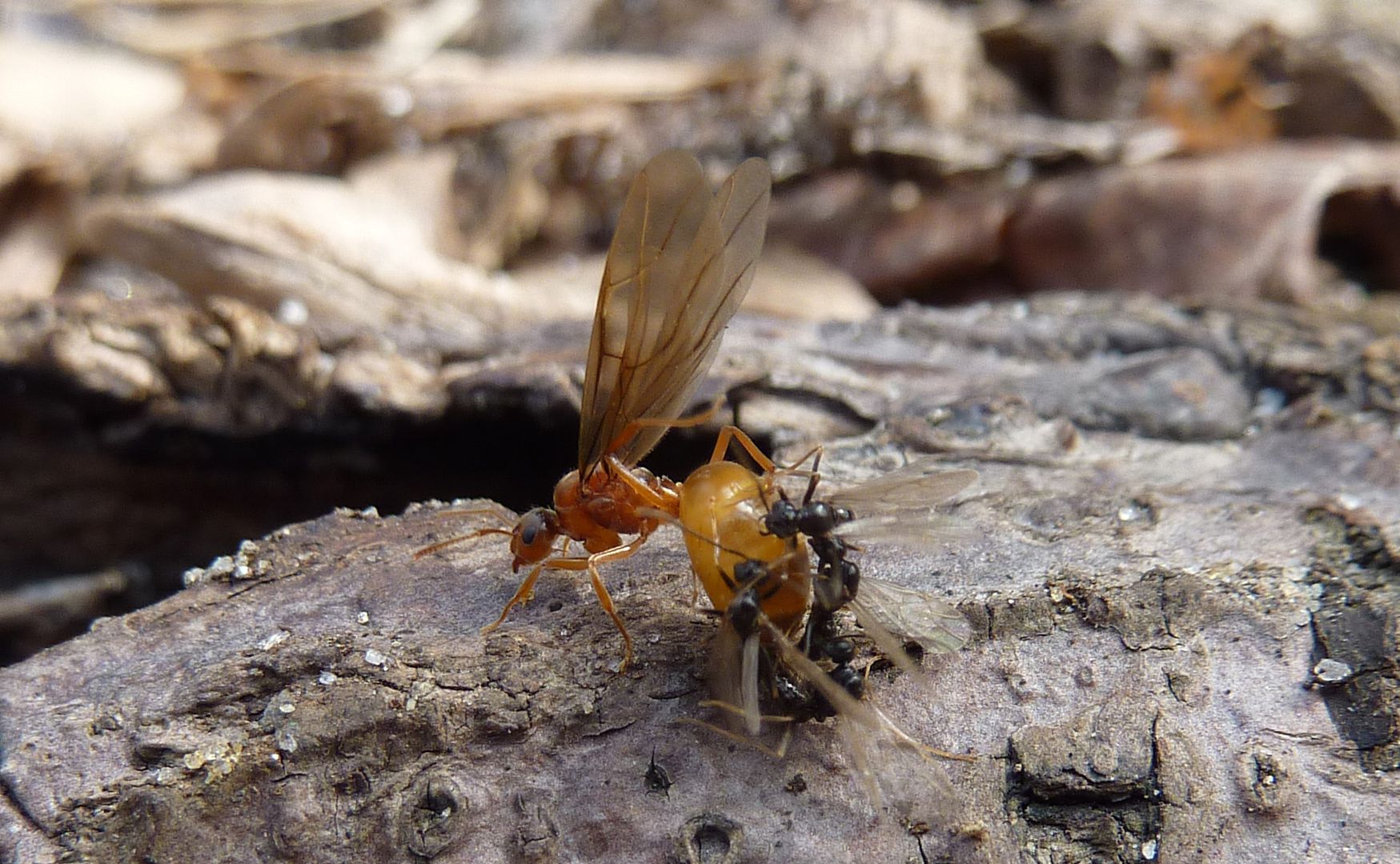
Trees and shrubs are where Prenolepis imparis flights tend to congregate. Even having a single tree is enough to attract a small swarm of males. Forest edges get way more attention of course. I happen to know someone who has a farm, the boarders of their land is a long forest where P. imparis colonies are very common. But beside their home they have a single oak tree, and under it there are several dozen P. imparis nests.
There are a number of aphids, scales, leaf and tree hoppers that ants tend for food too. I'd post them here but this thread would be twice as long.
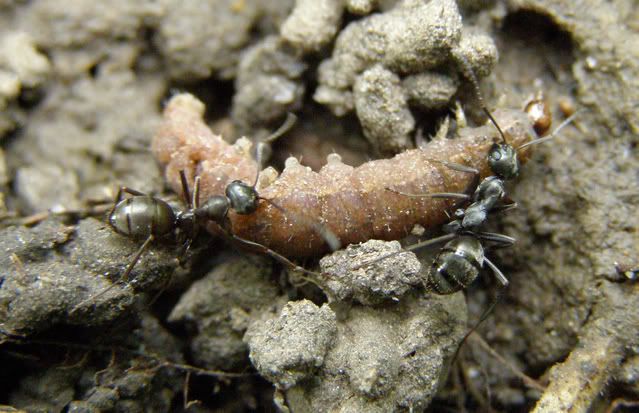
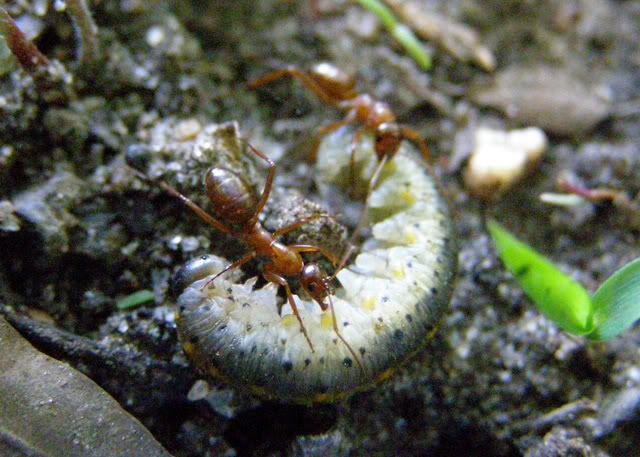
Formica subsericea and Formica pallidefulva rounding up caterpillars and sawfly larva.
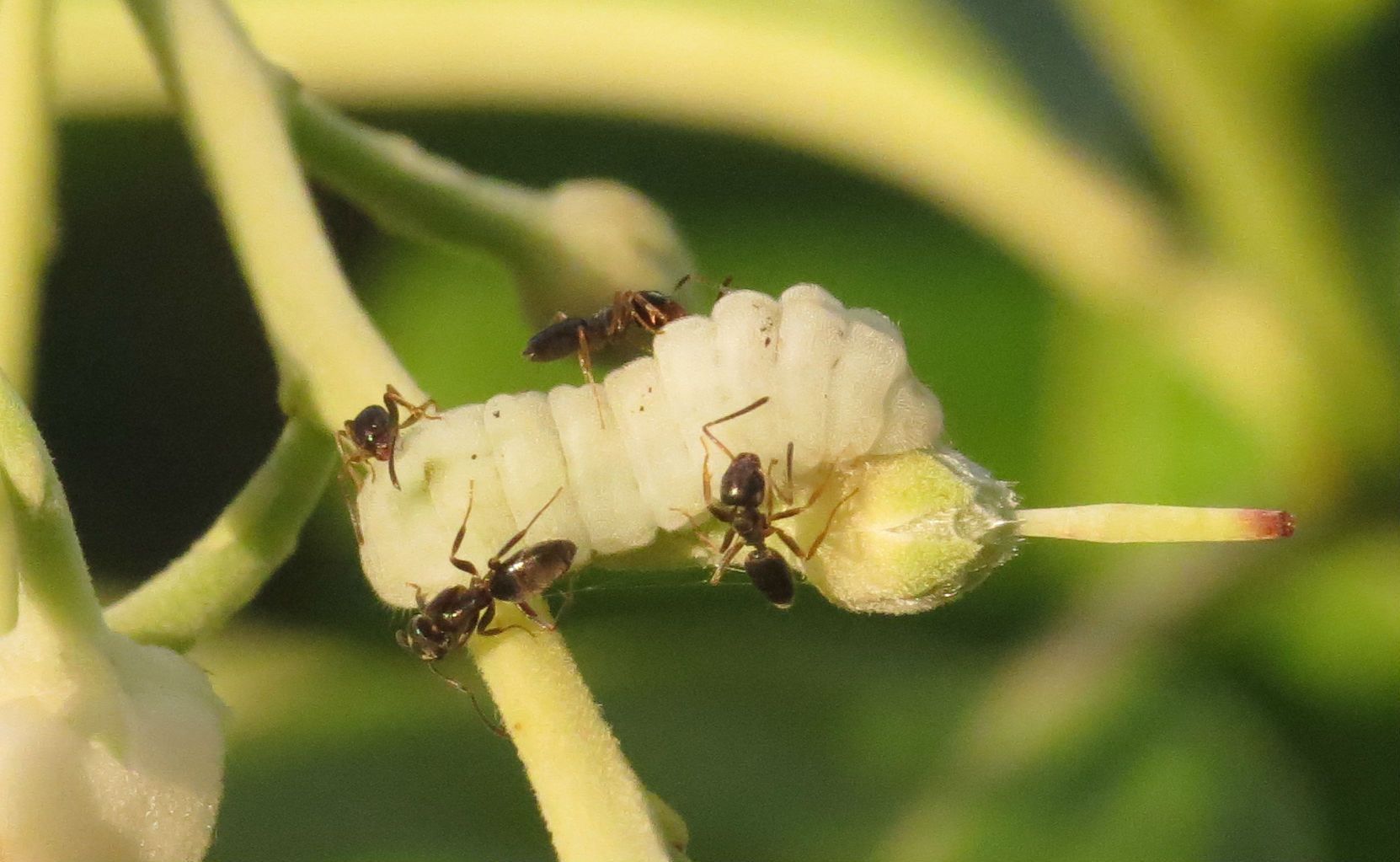
Some caterpillars take advantage of ants too. This is a Summer Azure butterfly and it secretes a substance that makes the ants tend to it offering some much needed protection. Before this caterpillar showed up on this sourwood tree the ants were stealing nectar from the flowers. Now that the caterpillar is eating the flowers though, the ants have stopped this behavior and are giving the caterpillar their full attention. This is an odd trade off for the tree as the ants stealing the nectar would drive away bees from pollinating it, but the caterpillar is out right eating these structures.
This caterpillar species may appear differently depending on what host plant it's on.
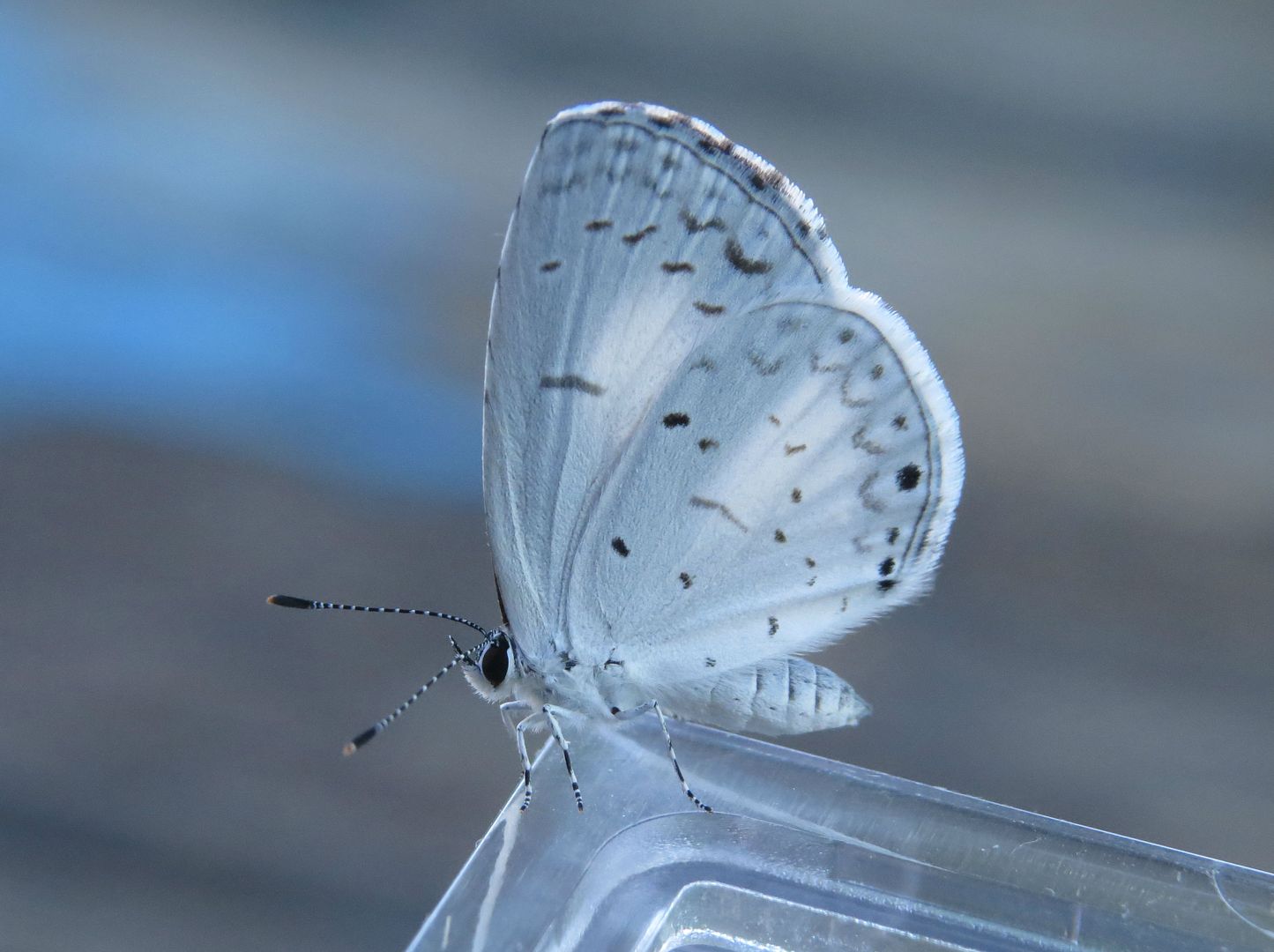
The adult Azure butterfly. They also lay eggs on New Jersey Tea, and Dogwoods, but only when they flower. They seem to go after any kind of plant that has soft, white bodied flowers of a simple design. Another species in this family hosts strictly on Lupinus perennis, and the caterpillar must over winter within an ant nest. Because of the added confusion with this life cycle it is naturally endangered, as it's also likely they require the correct ant species to nest within.
I love being able to see stuff like this happen in my back yard.
Ants can benefit from caterpillars indirectly as well. Trachymyrmex septentrionalis is a fungus growing species that uses the frass of caterpillars, grasshoppers and other insects that feed on plant foliage as fertilizer for their fungus gardens.
Fungus growing in ants came about because they discovered a food source that let them thrive in environments they might not do as well in. Because of this many fungus growing species have become endemic only to places where their fungus gardens are able to grow. T. septentrionalis happens to have a strain that's able to grow farther north than any other species.
Oddly enough certain non-native grass seeds used in lawns are able to grow in these kinds of scrub lands and odd soil types. They don't do well so when such places are developed people have to water and fertilize them to get that "golf course-look" and then of course have to use herbicides to keep the plants that want to thrive in these places out.
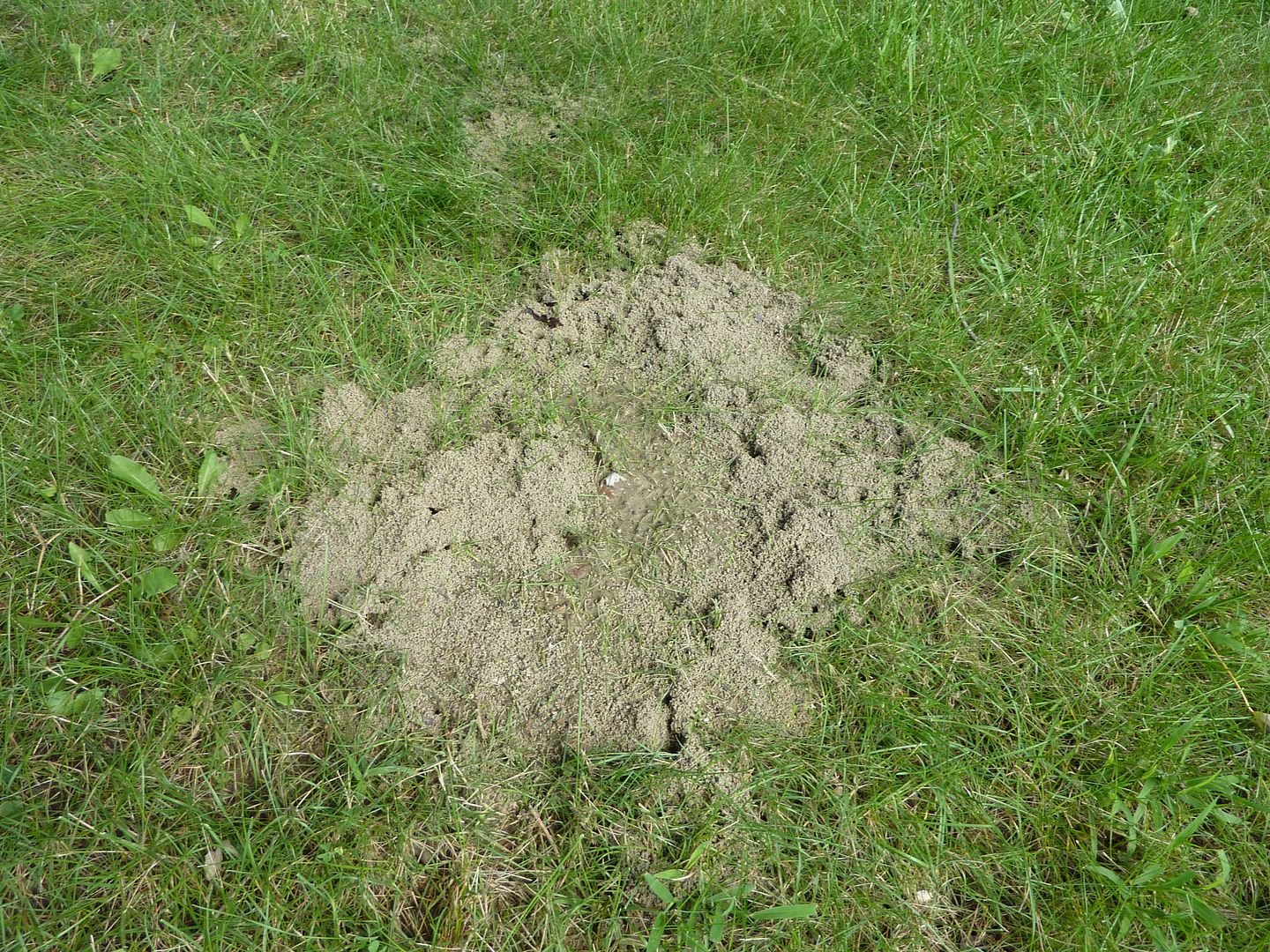
Lawns are not totally useless though. They're hold up to foot traffic extremely well compared to other types of foliage and ants can still nest in them. It's best they stay patchy and not so lush looking (and makes finding queen ants a lot easier to find.) Here is a nest of Formica subsericea in my front lawn. They stayed there for a year, then up and moved their whole operation one day to my neighbor's backyard, and they've moved again since.
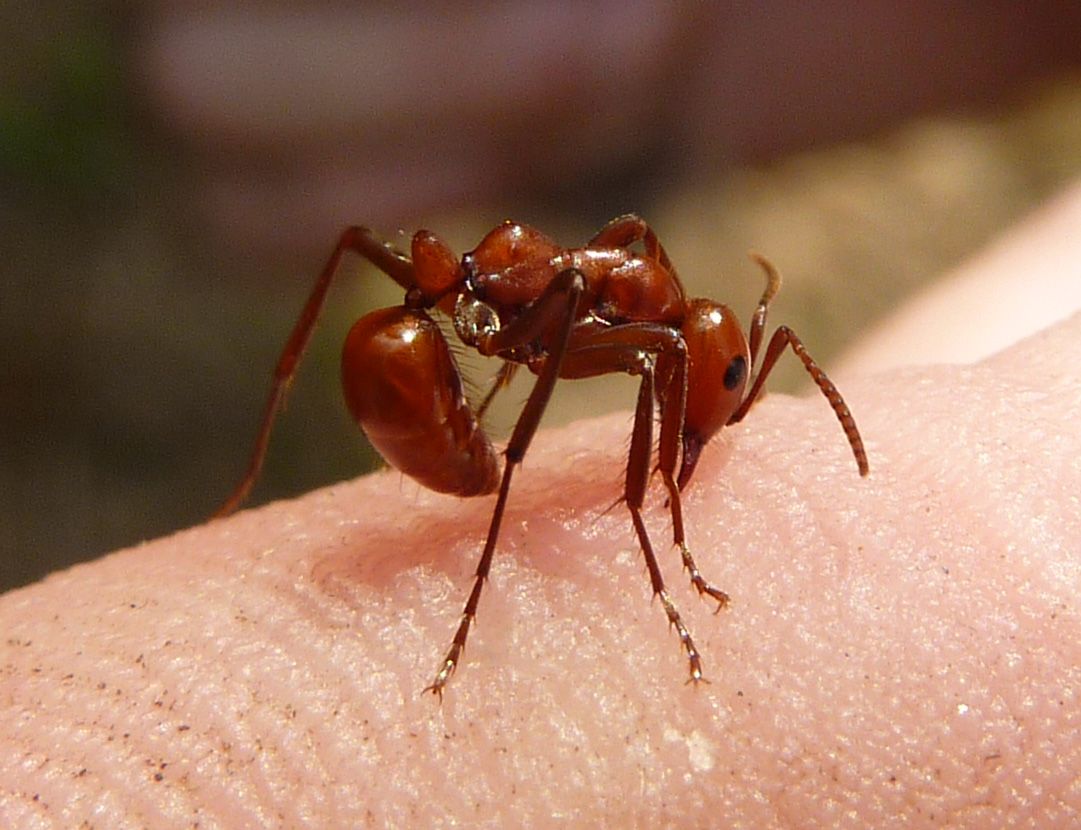
With an abundance of insect food and nectar sources around, Formica populations tend to flourish. But this attracts unwanted attention. Pictured above is a Polyergus which is genus of specialized slave makers of Formica species. Polyergus colonies can not exist without Formica host workers. But Formica is such a diverse and wide spread genus that some Formica species have learned to do this as well.
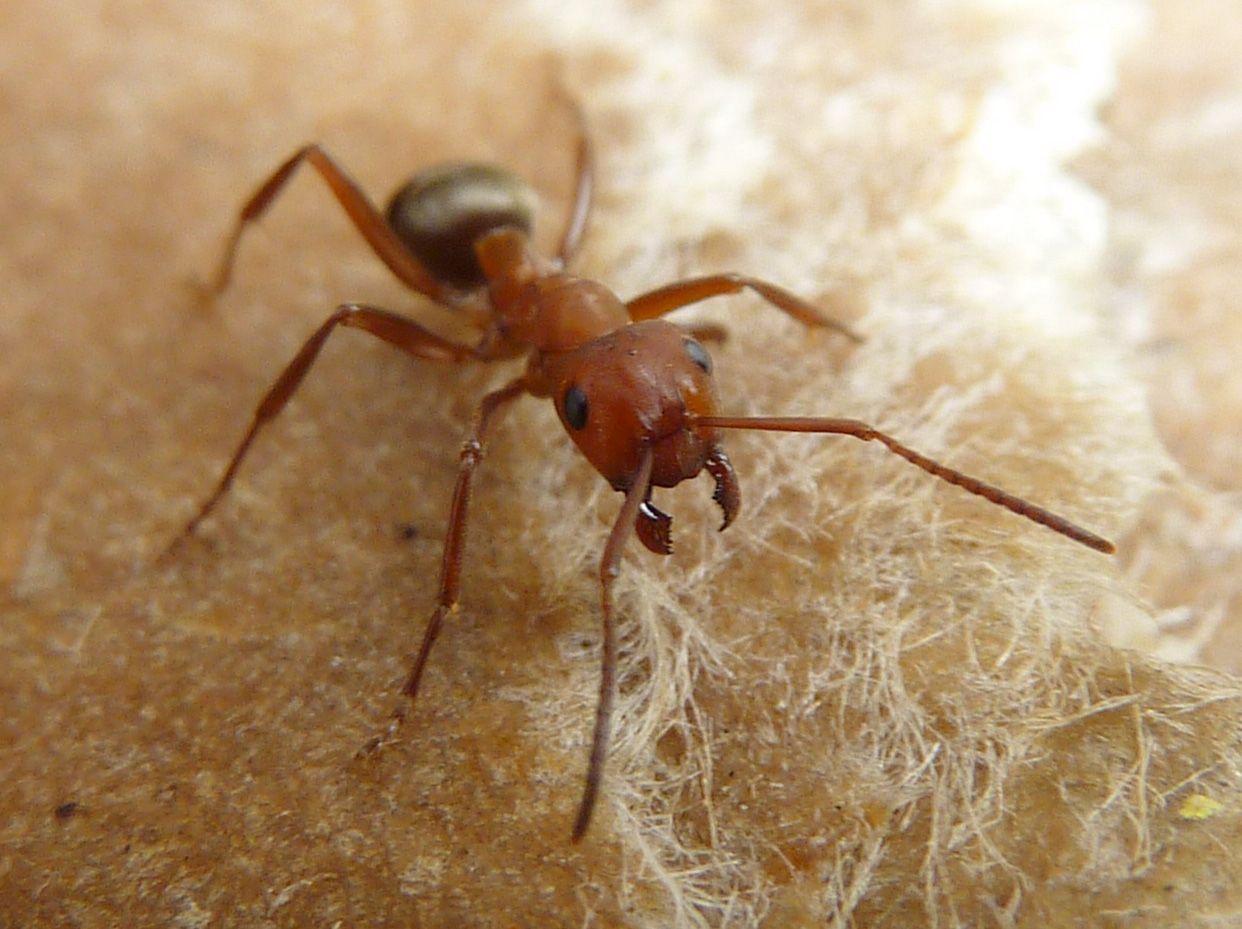
Back in 2010 I managed to attract a single colony of Formica pergandei to my yard. In a few weeks they completely decimated the F. pallidefulva and F. incerta population. Each day they would move their entire colony into a new host colony, basically storming into the nest, murdering the queen and any alate brood. Workers that tried to resist were either cast out or killed. F. pallidefulva and F. incerta I would describe as timid ants that would sooner abandon the nest than defend it really. F. pergandei is far more aggressive, especially towards humans. As I observed their behavior, many of them locked onto me and sprayed acid as a response to movement.
Another example of parasitism in ants is within the genus Lasius, where the parasitic species out number their hosts 10 to 1!
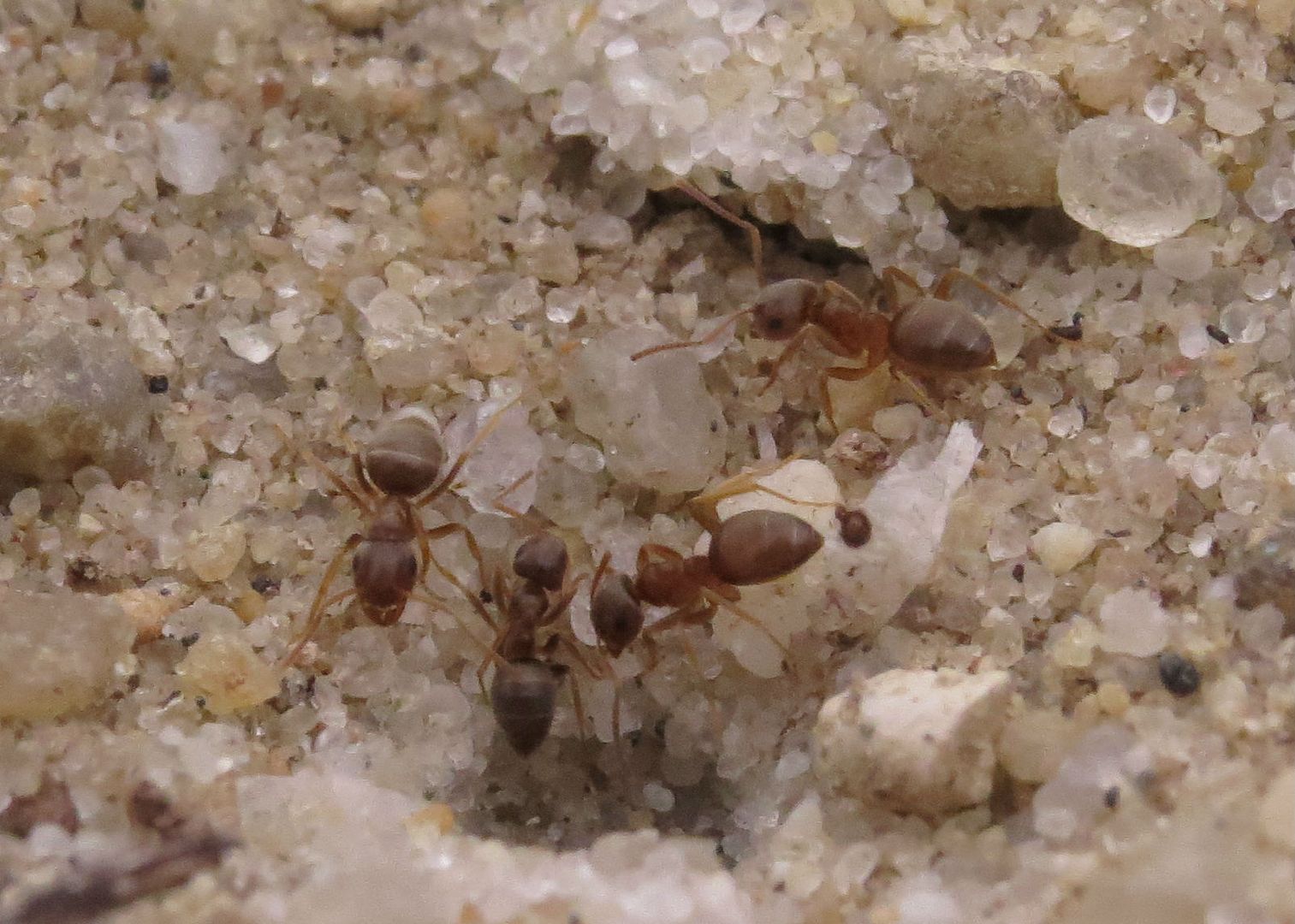
Lasius neoniger nest in sandy soil in sunny locations, while its counterpart Lasius alienus nests in dead wood in and along forest edges. Lasius pallitarsis and a few others can be found here and about the US.
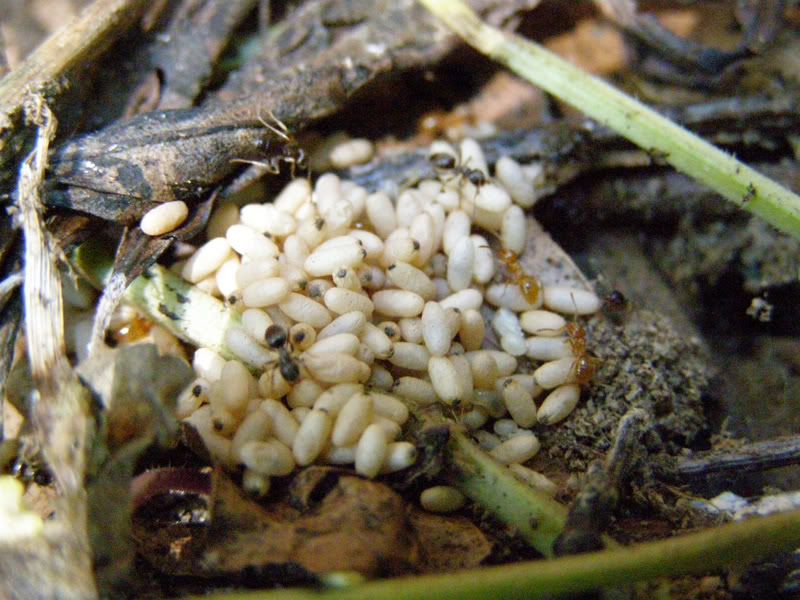
Here a colony of Lasius alienus has been parasitized by Lasius claviger. Despite being such a common species, actually finding a colony in the transition process is surprisingly rare. Here the host species is only needed during the founding stage. The colony will turn into nothing but Lasius claviger..... until they are parasitized themselves by Lasius interjectus.
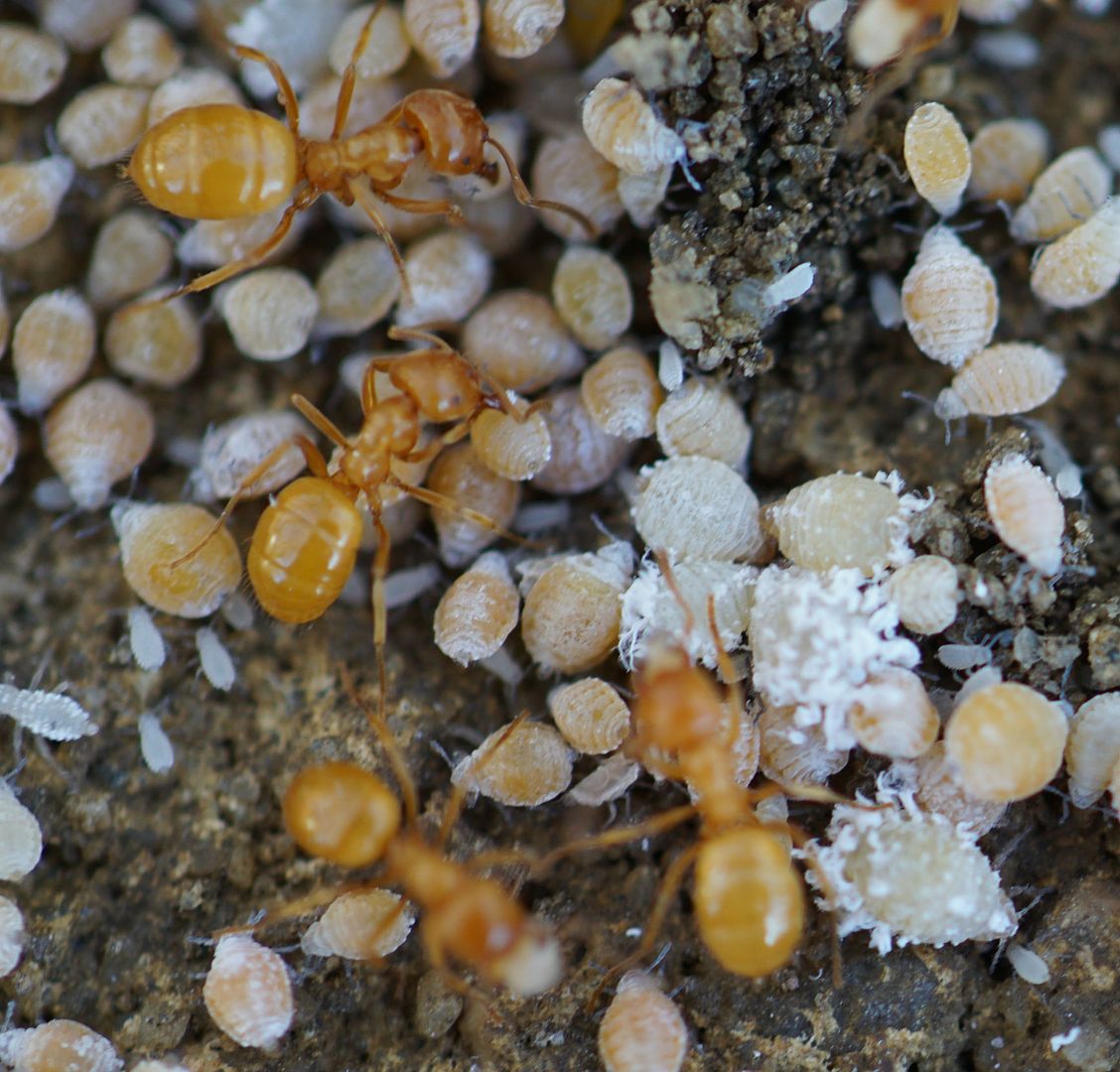
Whether claviger or interjectus though, the resulting colony is almost completely subterranean feeding on the dew from root aphids.
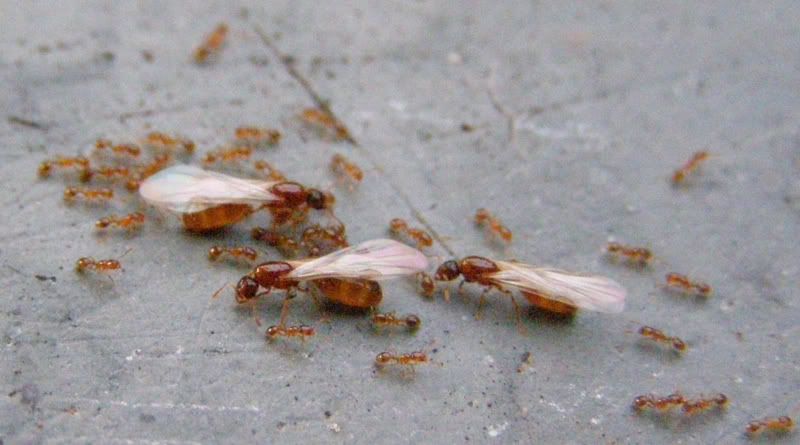
Another ant that is arguably cryptic might be Solenopsis molesta. They have the common name thief ant because they often nest next to other ants, such as Lasius claviger where they will steal their brood for food, and hung their supply of root aphids. In pure sand, this species is replace by Solenopsis texana which basically does the same thing.
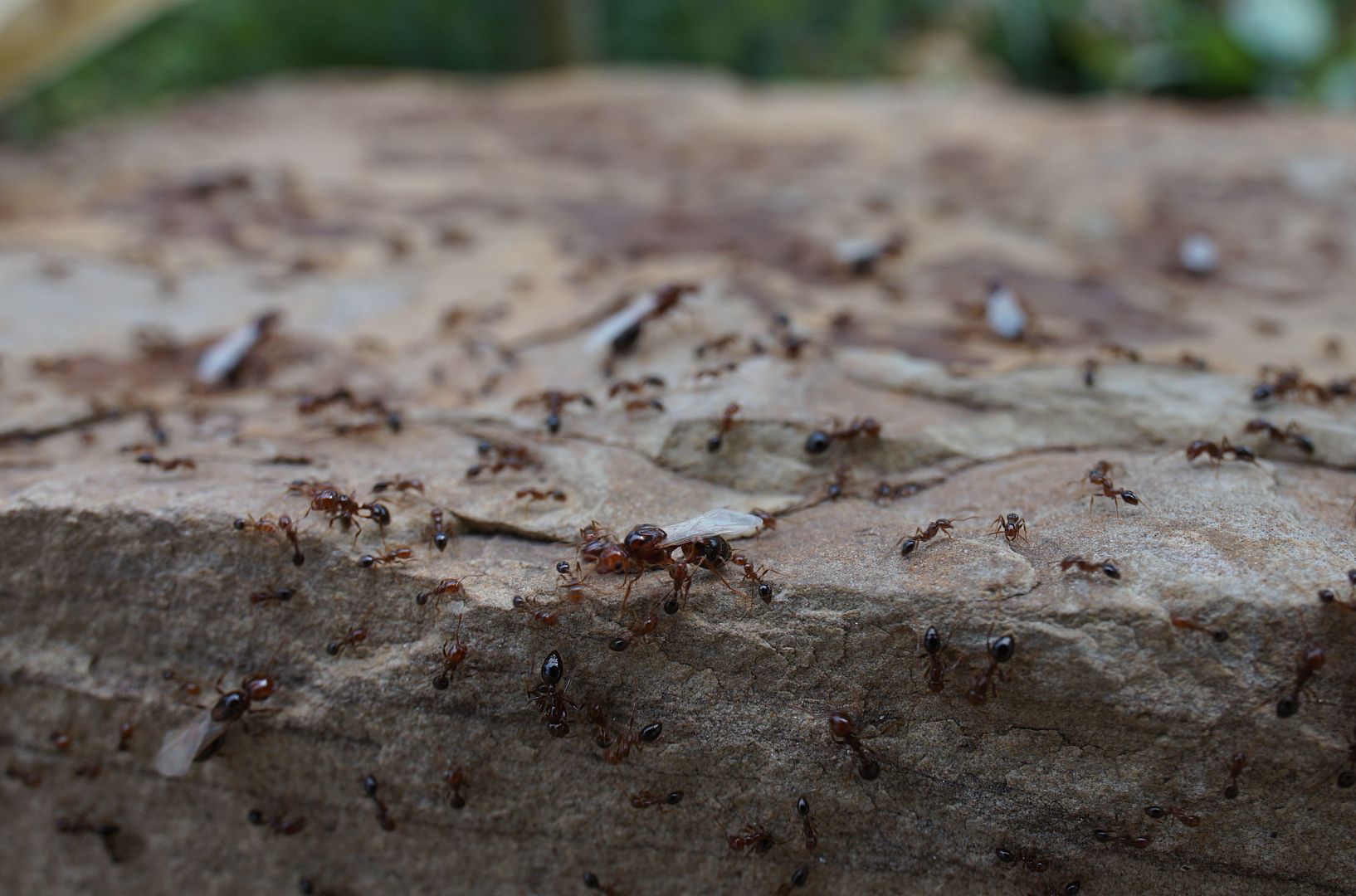
In the same genus is Solenopsis invicta, the Red Imported Fire Ant, which love nesting in lawns and disturbed farm land. Places that are often watered regularly and offer pavement to incubate their brood. It's this kind of "golf course-looking" landscape that has allowed many invasive species to thrive and take over. In their native land Fire Ants are really only common in disturbed locations. The very act of mowing a lawn, preventing an abundance of plant life from growing is exactly that.
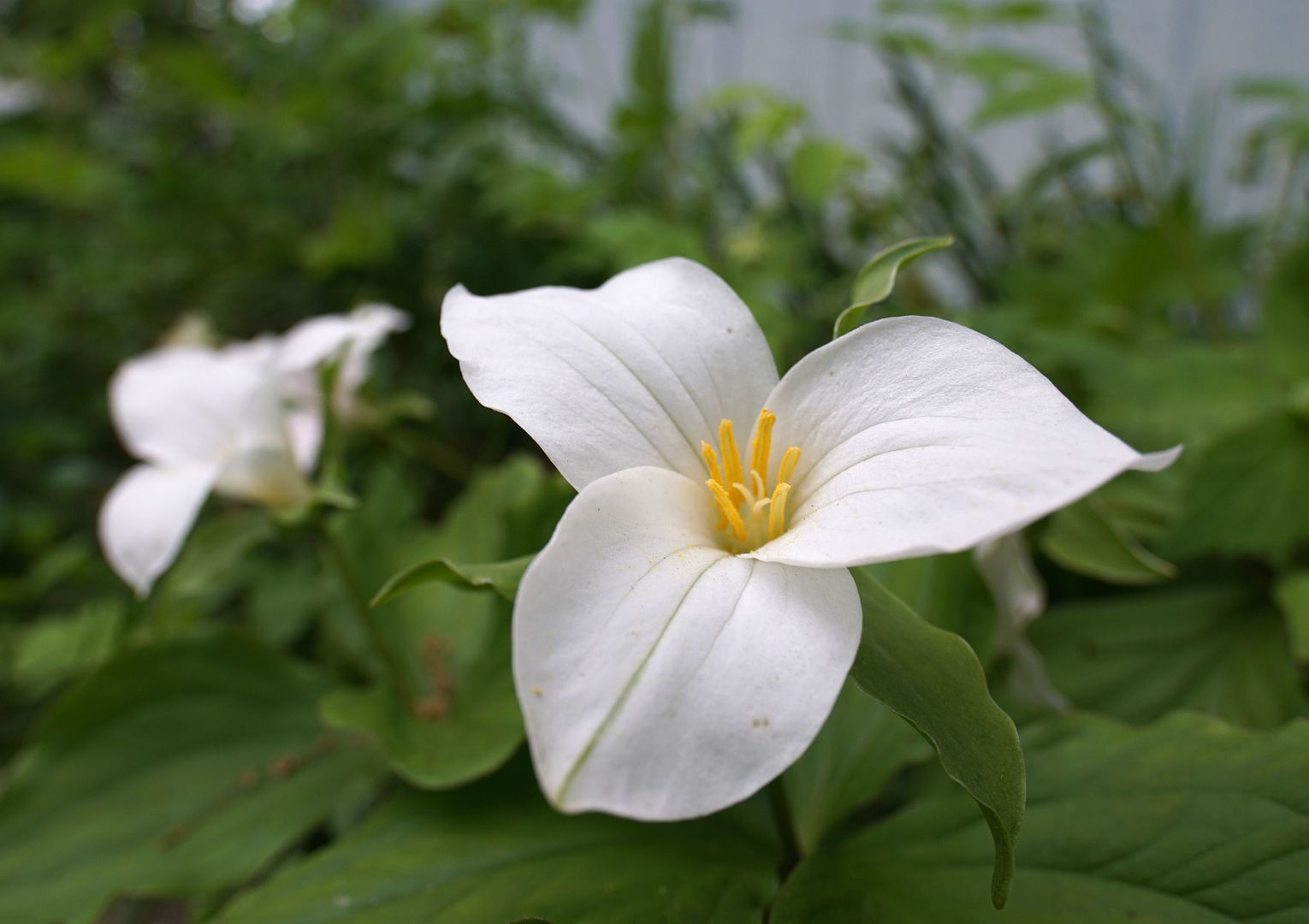
Also in especially wooden environments our native Ephemerals grow. Spring wildflowers such as Blood Root, Woodland Poppy, Twinleaf, and Trillium all flower in the early spring and complete their growing cycle by mid summer. Pictured above is Trillium grandiflorum.
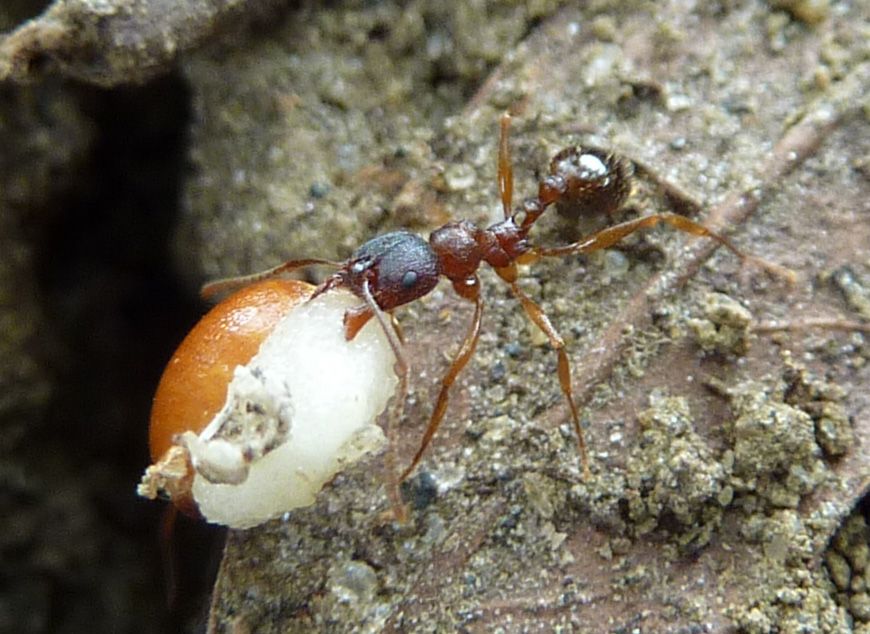
The seeds to Trilliums and many other ephemerals have packets of elaiosome on them, which is a lipid rich substance. It's basically ant food. Roughly 40% of our native wildflowers are actually planted by ants in the wild! They assist with seed dispersal and are how many of these species manage to spread up hill.

Plants that don't have this kind of relationship with ants and their seeds, are otherwise just food. Here a Tetramorium caespitum worker has ground off a piece of sunflower from under our bird feeder and is carrying it home.
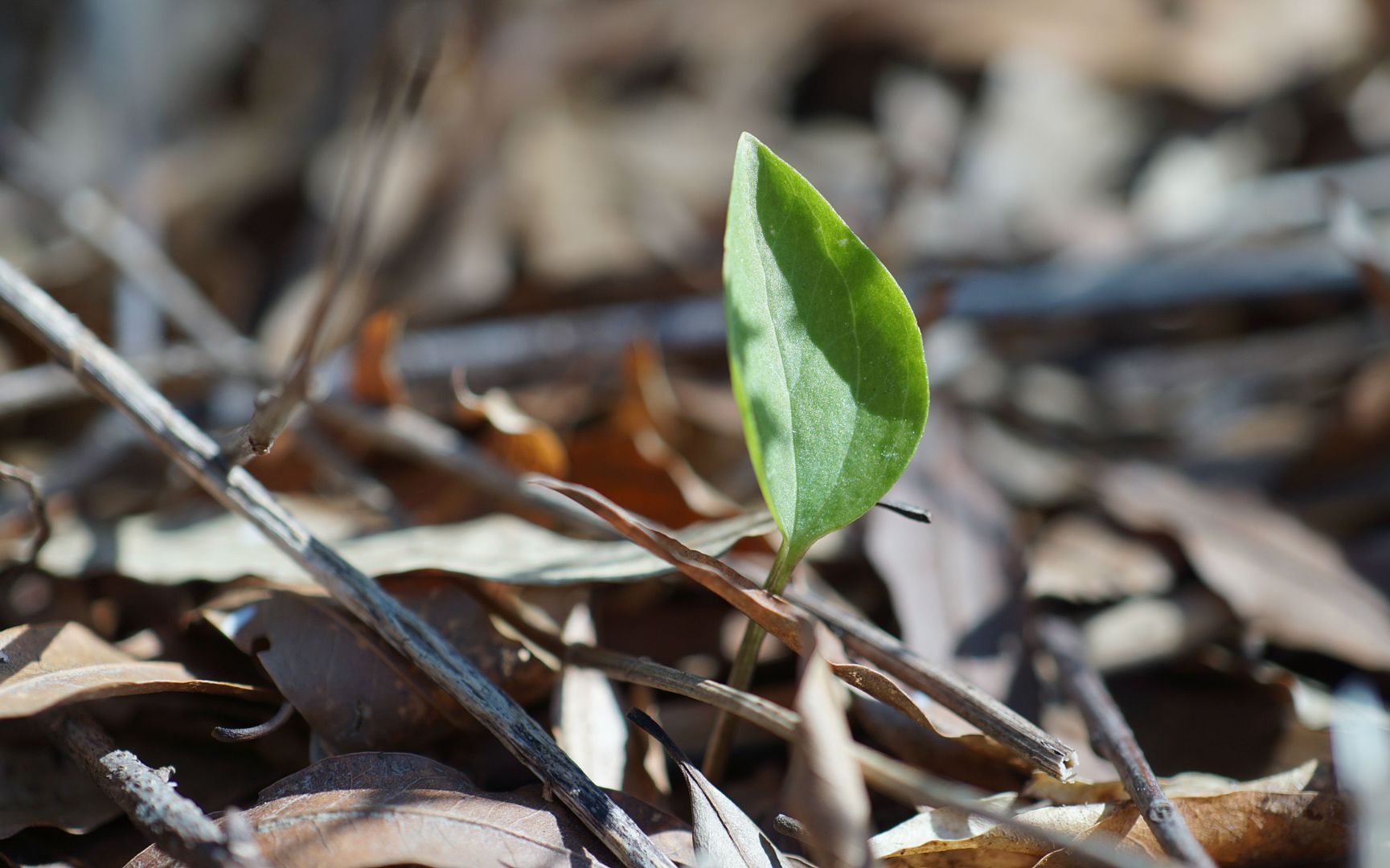
A young Trillium planted by a colony of Aphaenogaster rudis grows out of the colony midden pile, where the ants covered it in their trash and mother nature covered it with leaves.
Eventually after the better half of a decade the Trillium will grow to a flowering age and the cycle will start all over again.
Edited by MrILoveTheAnts, September 7 2017 - 8:25 PM.
Removed profanity and fixed images


